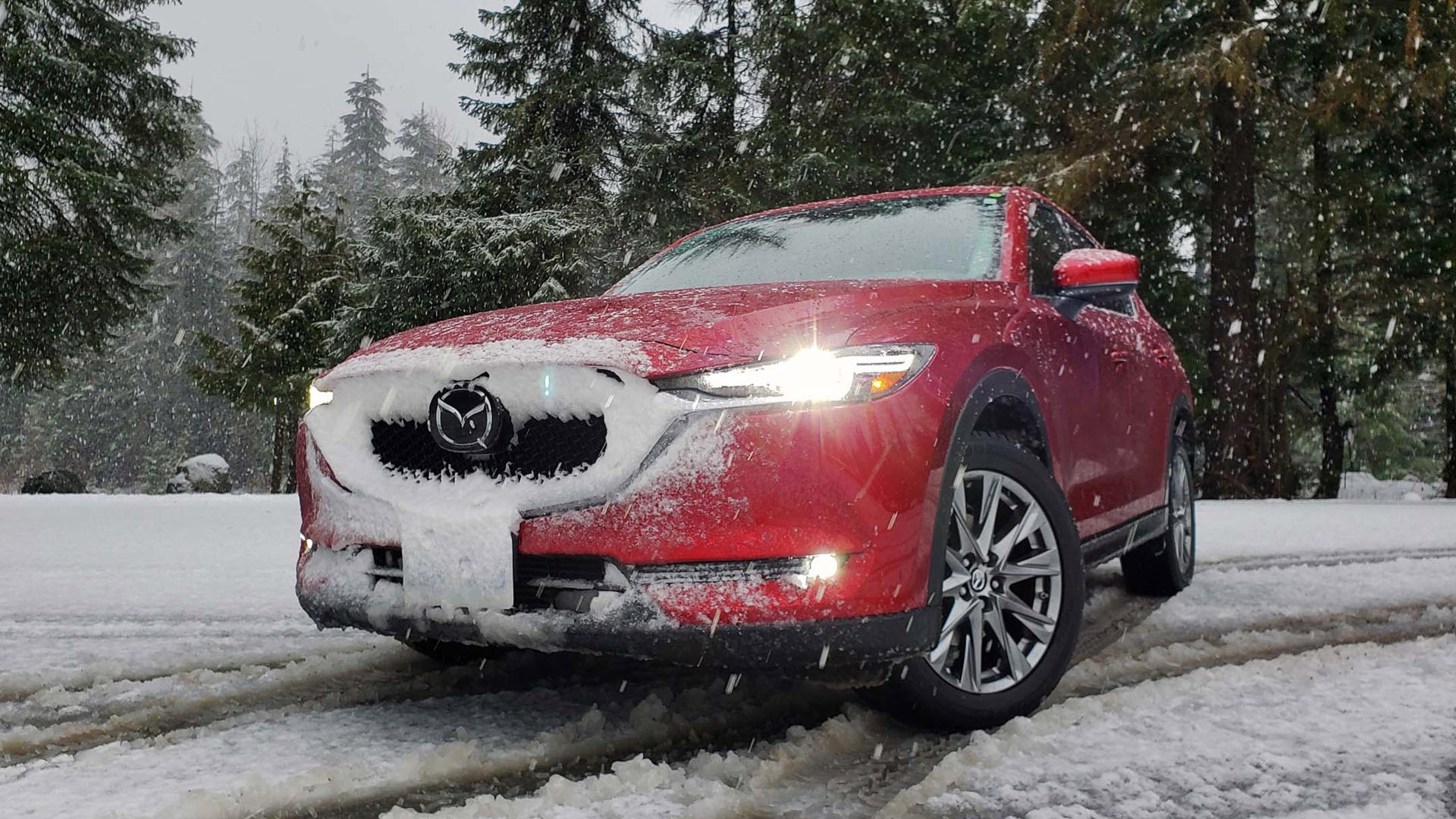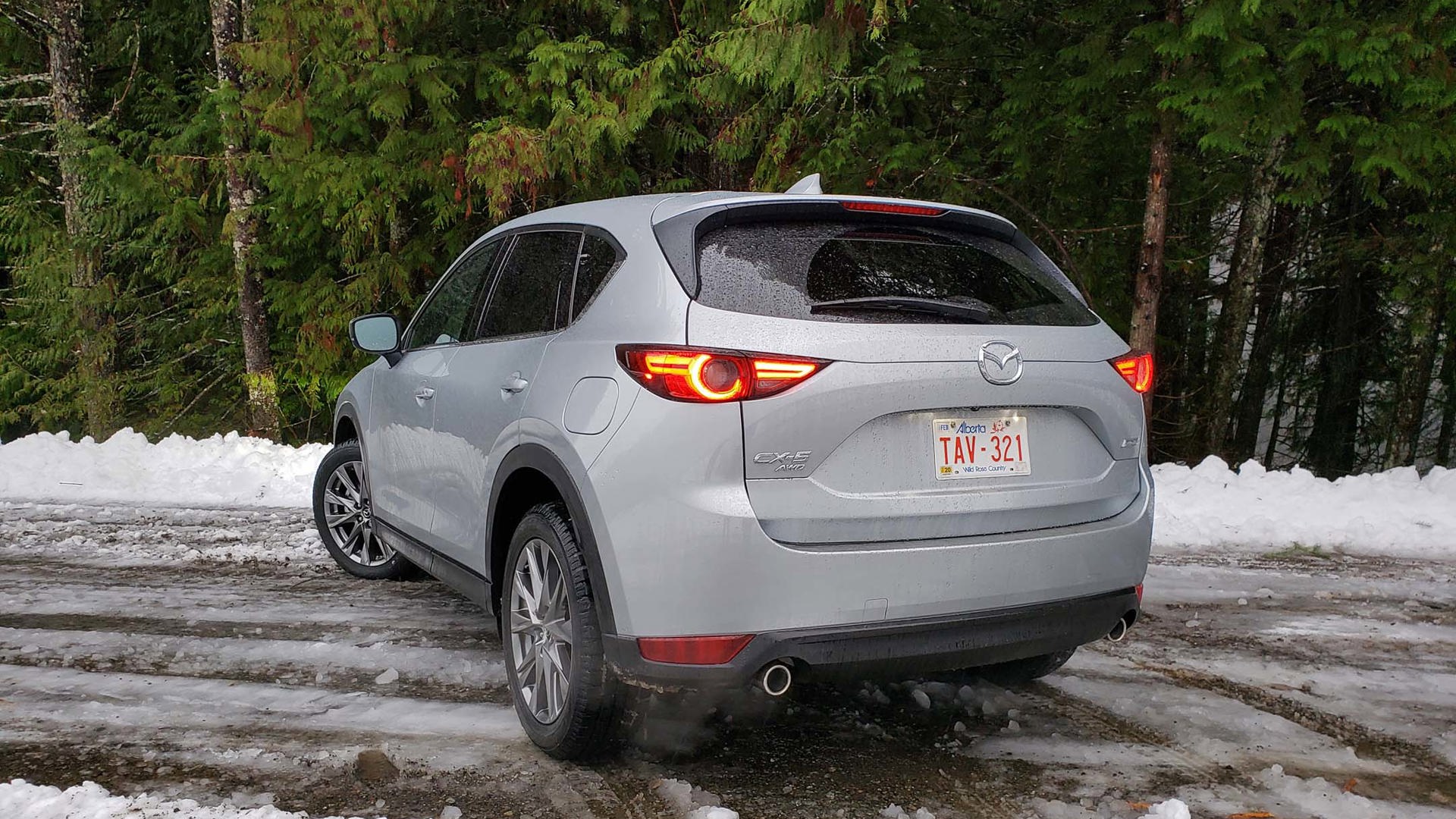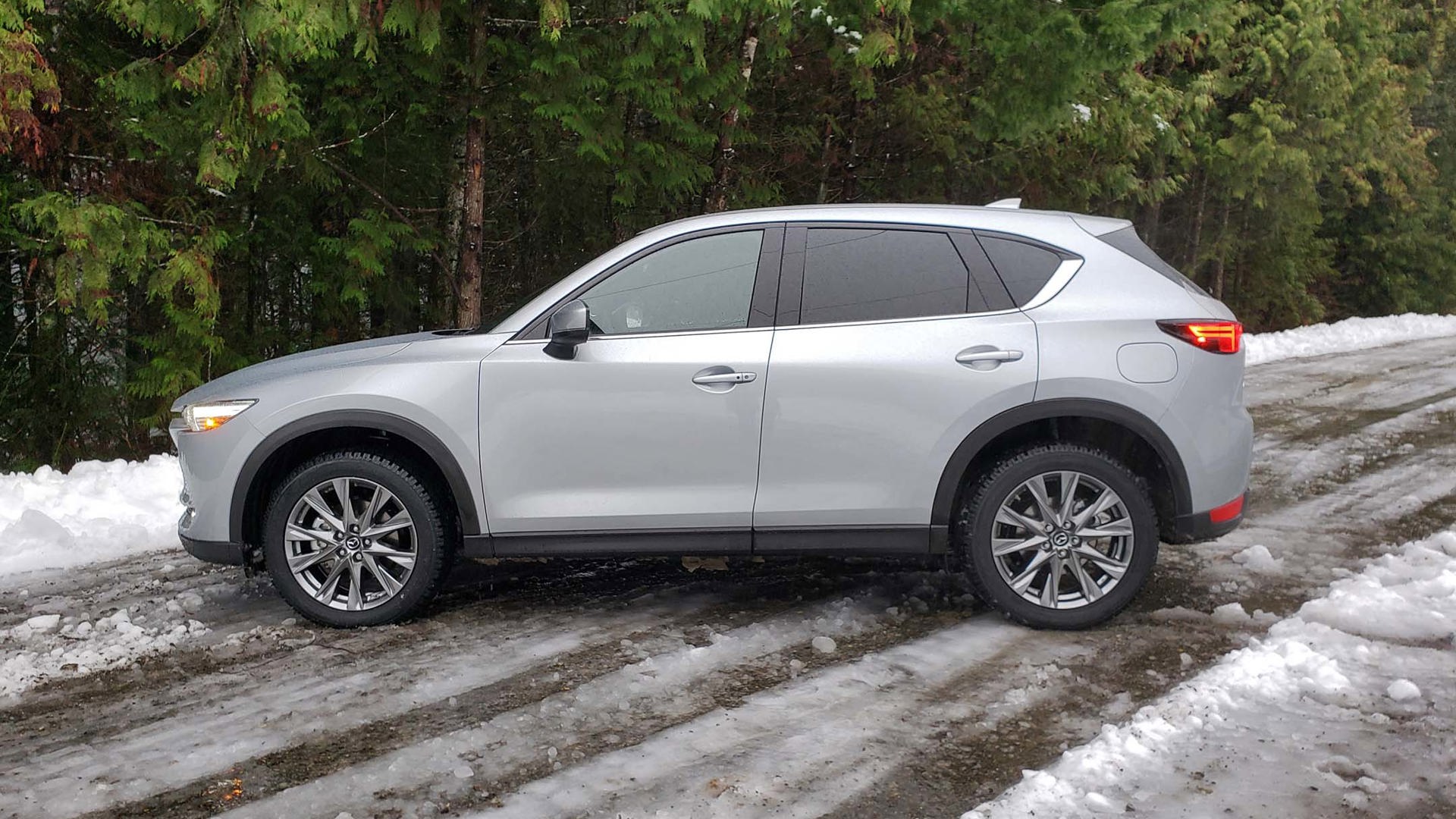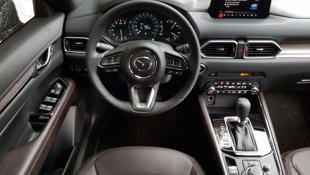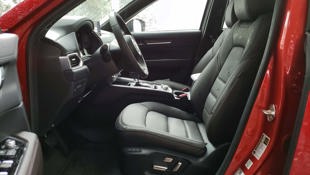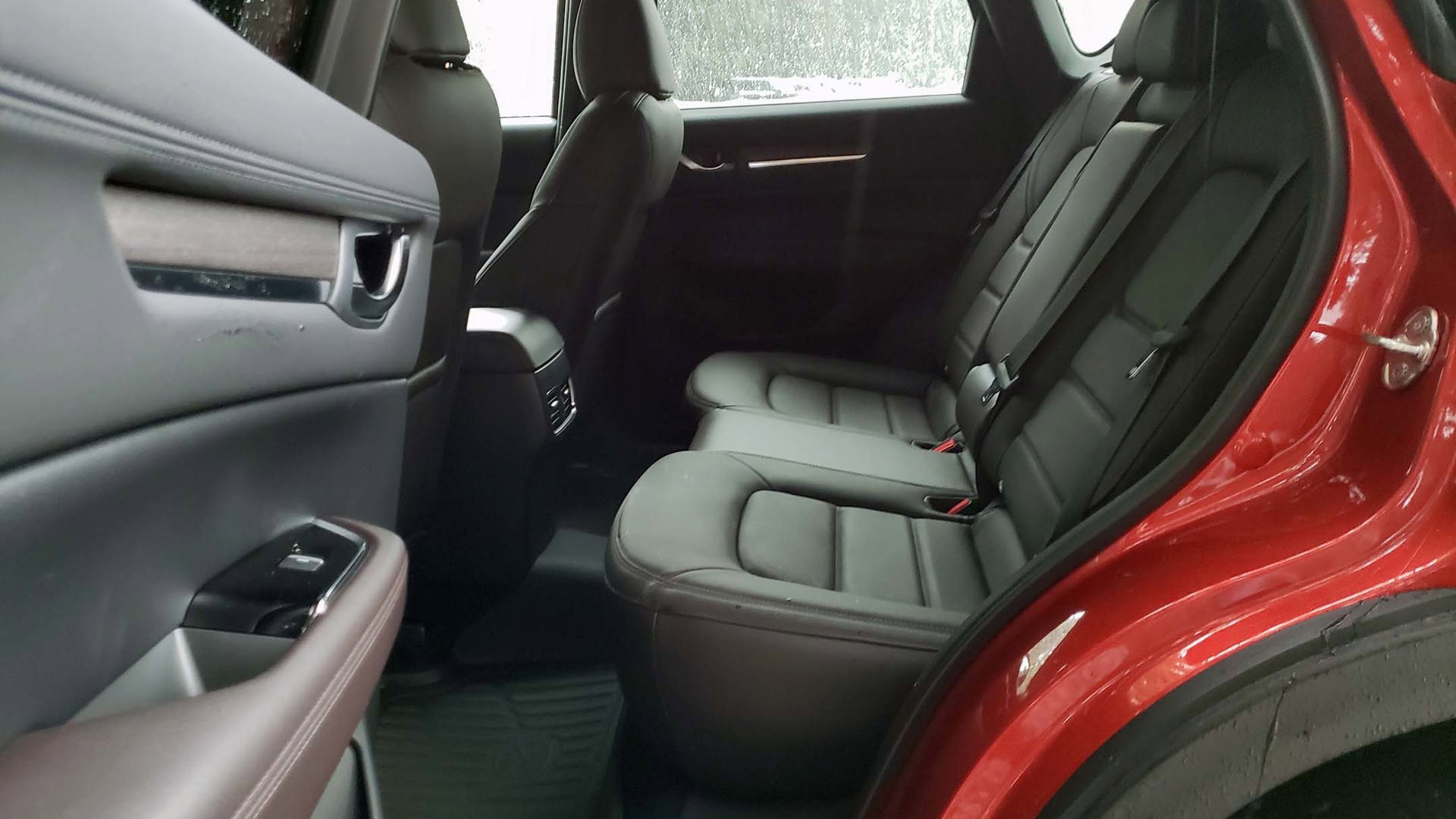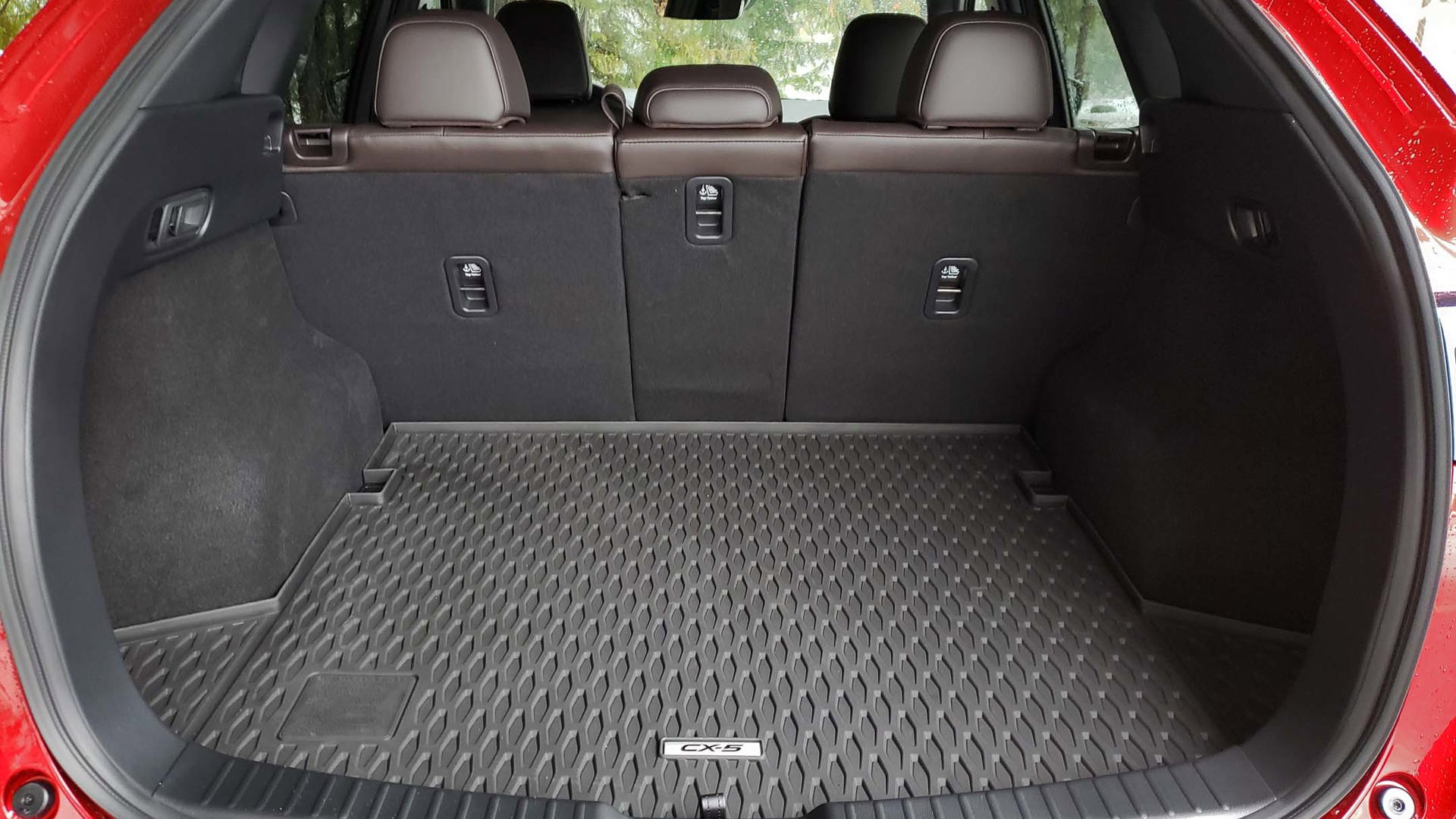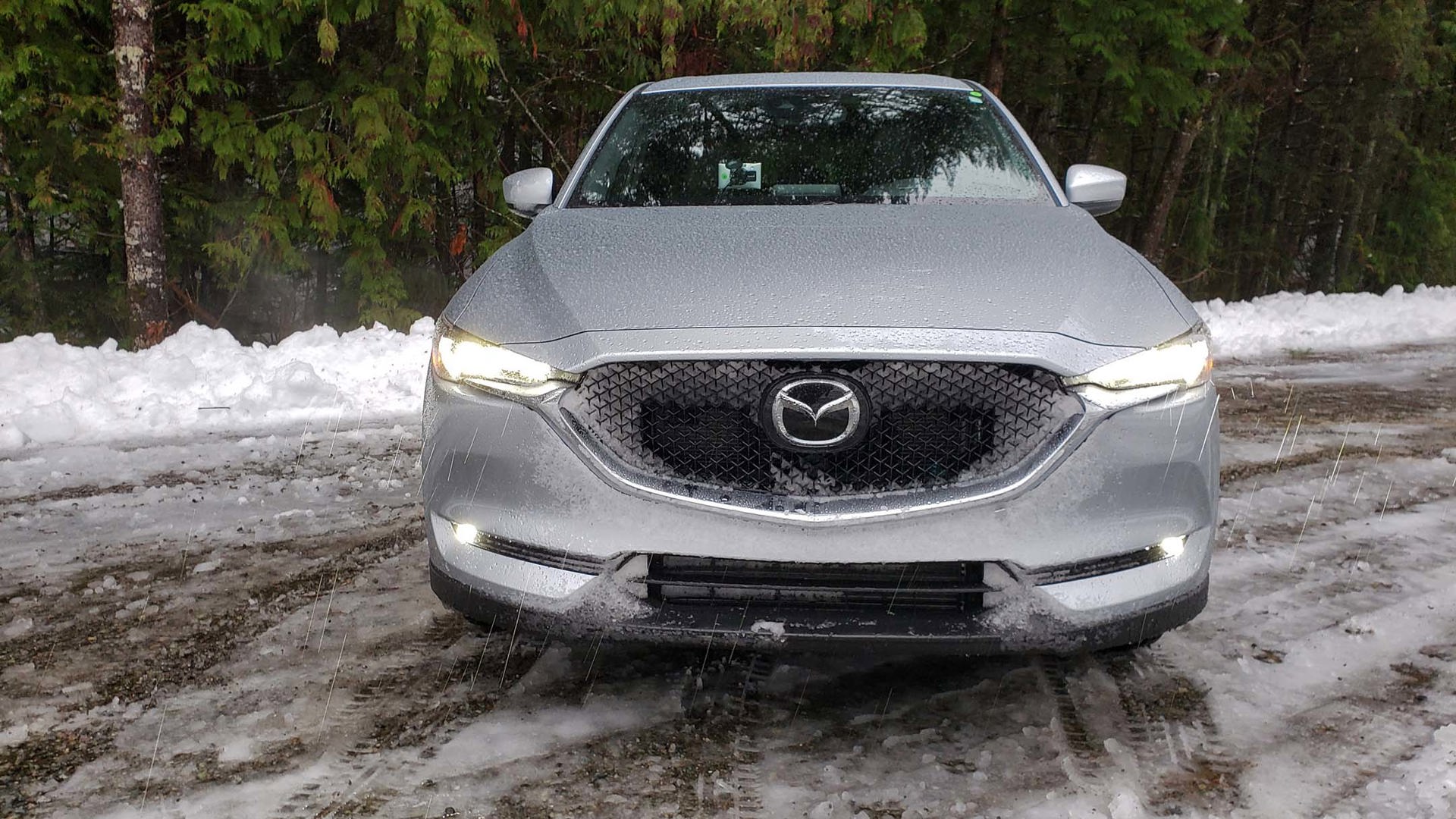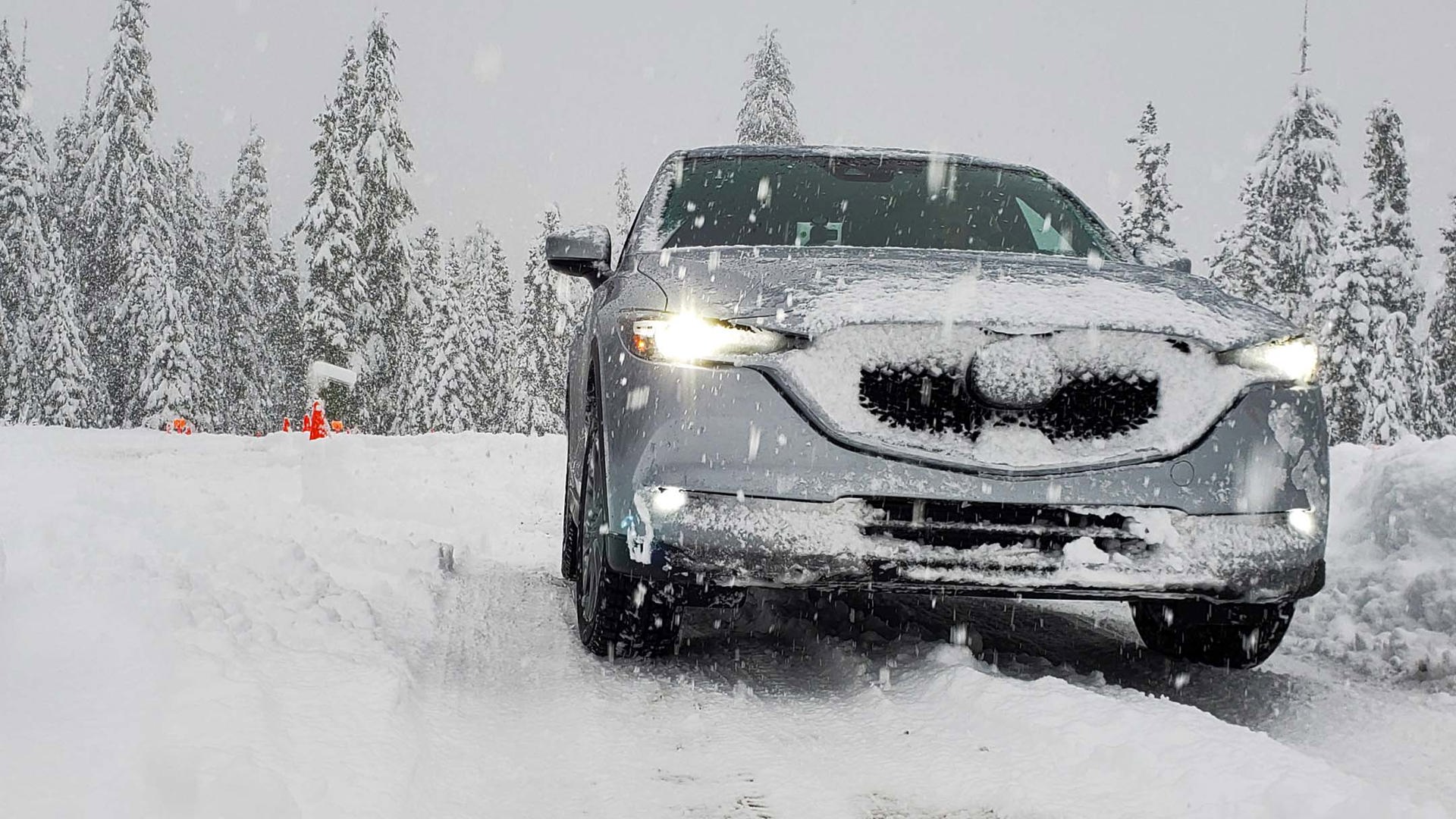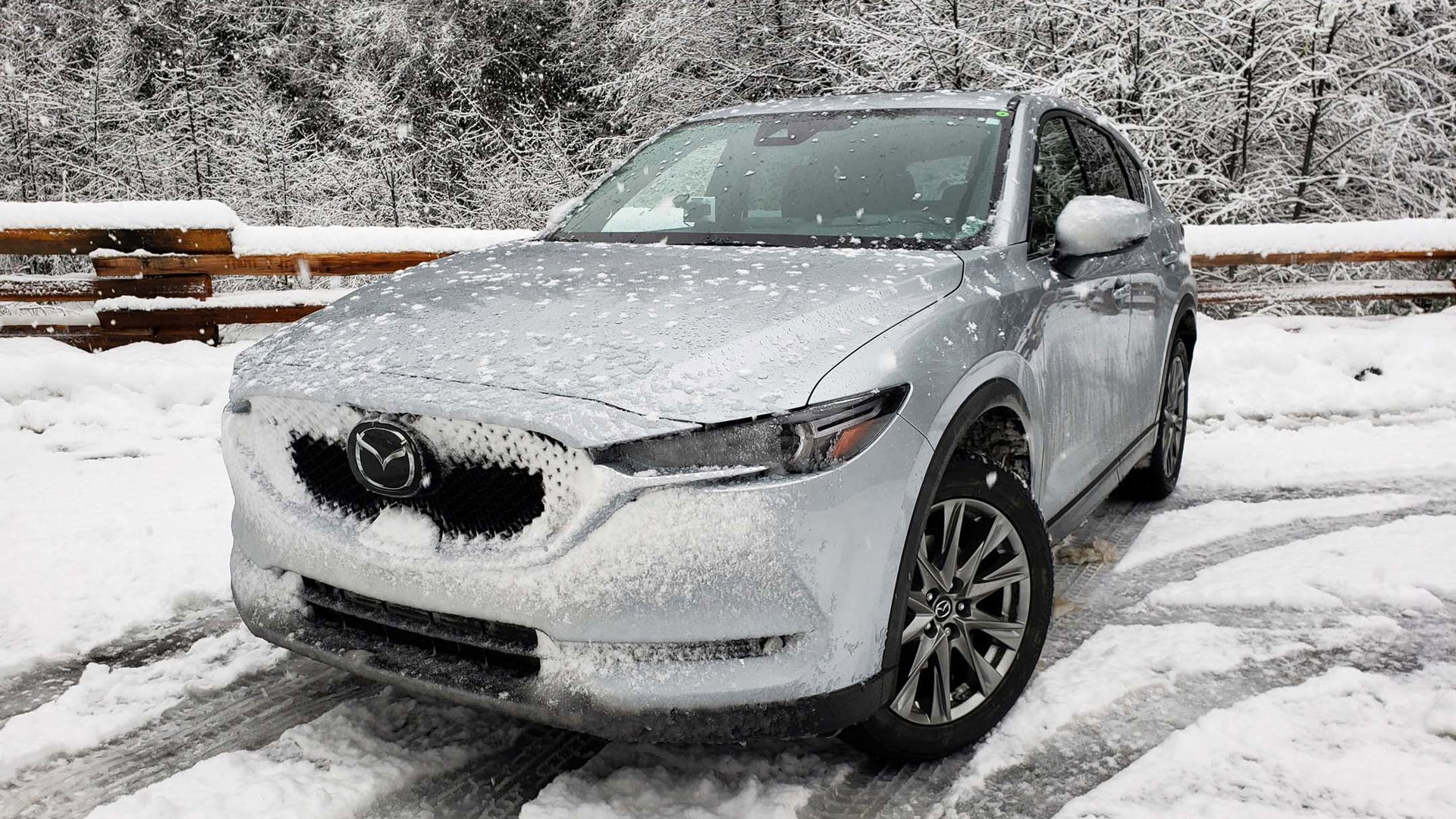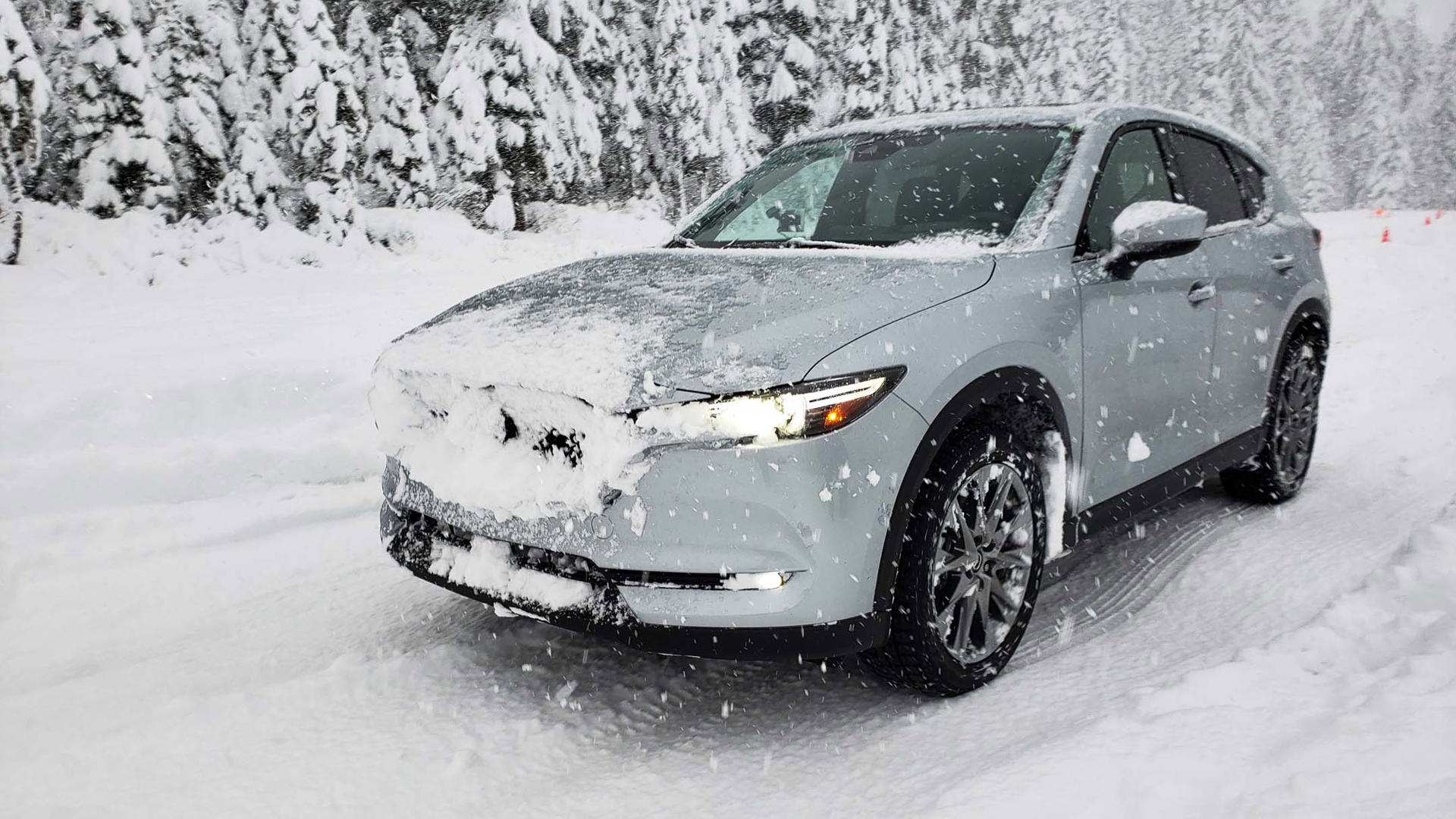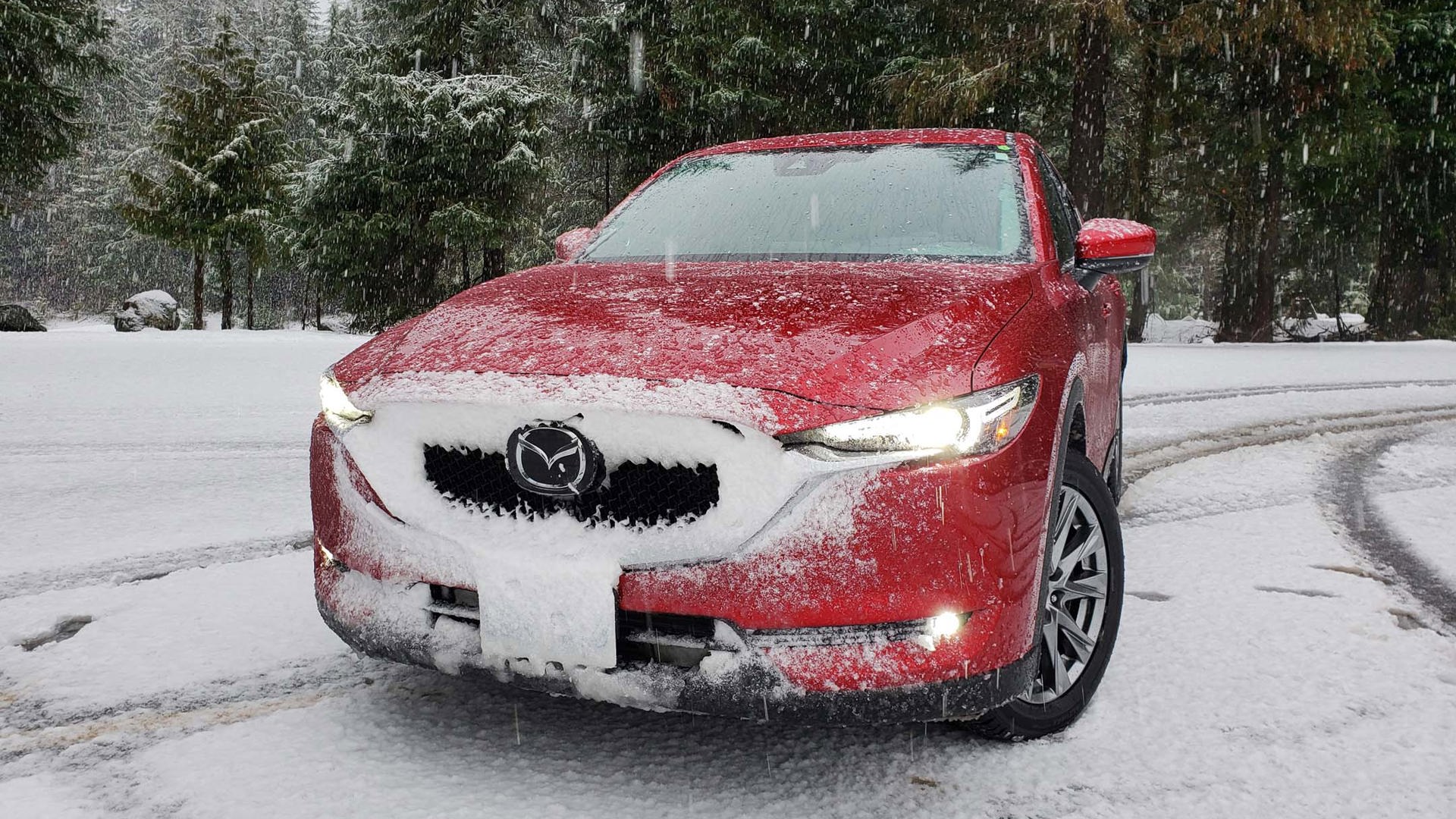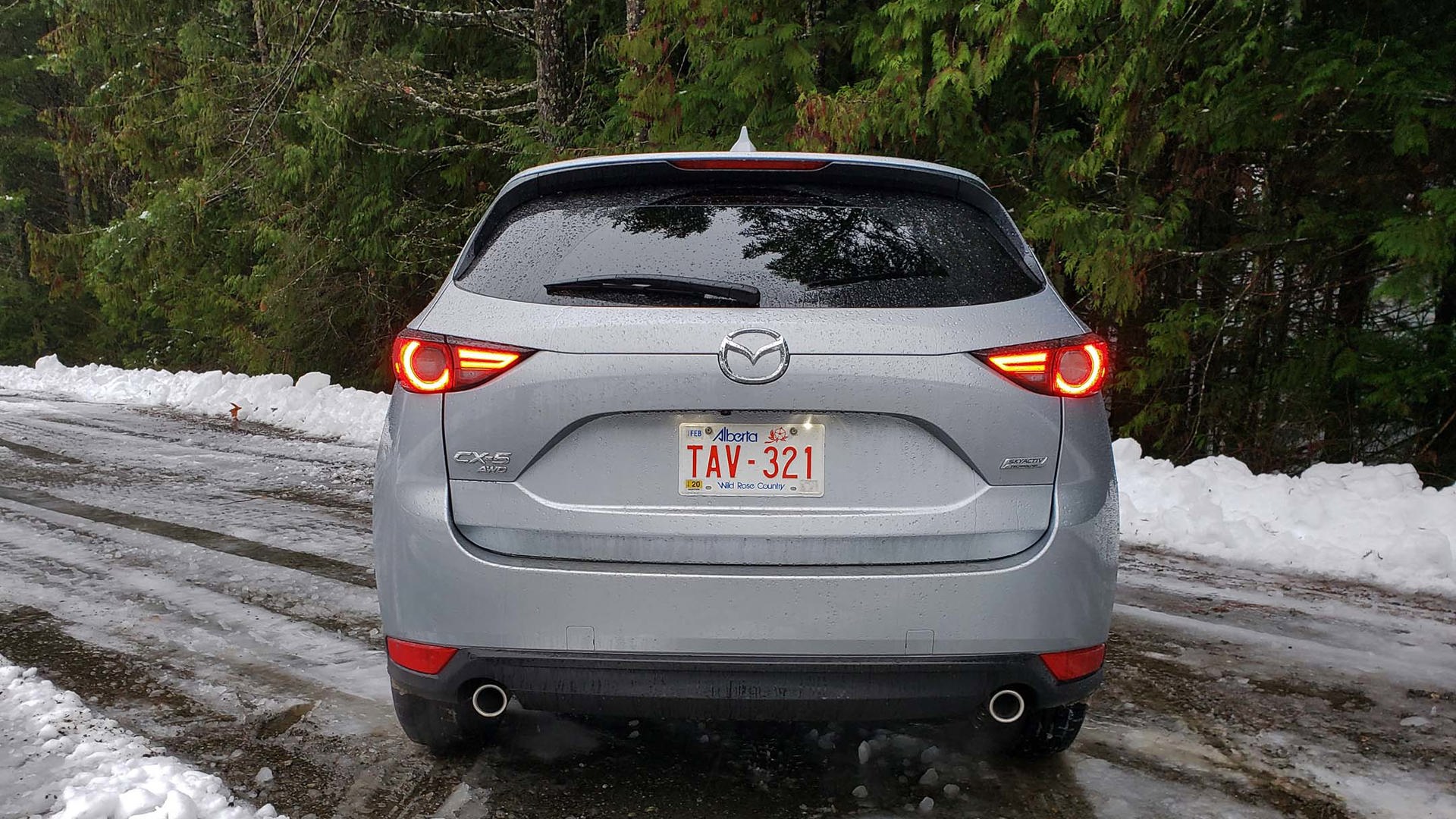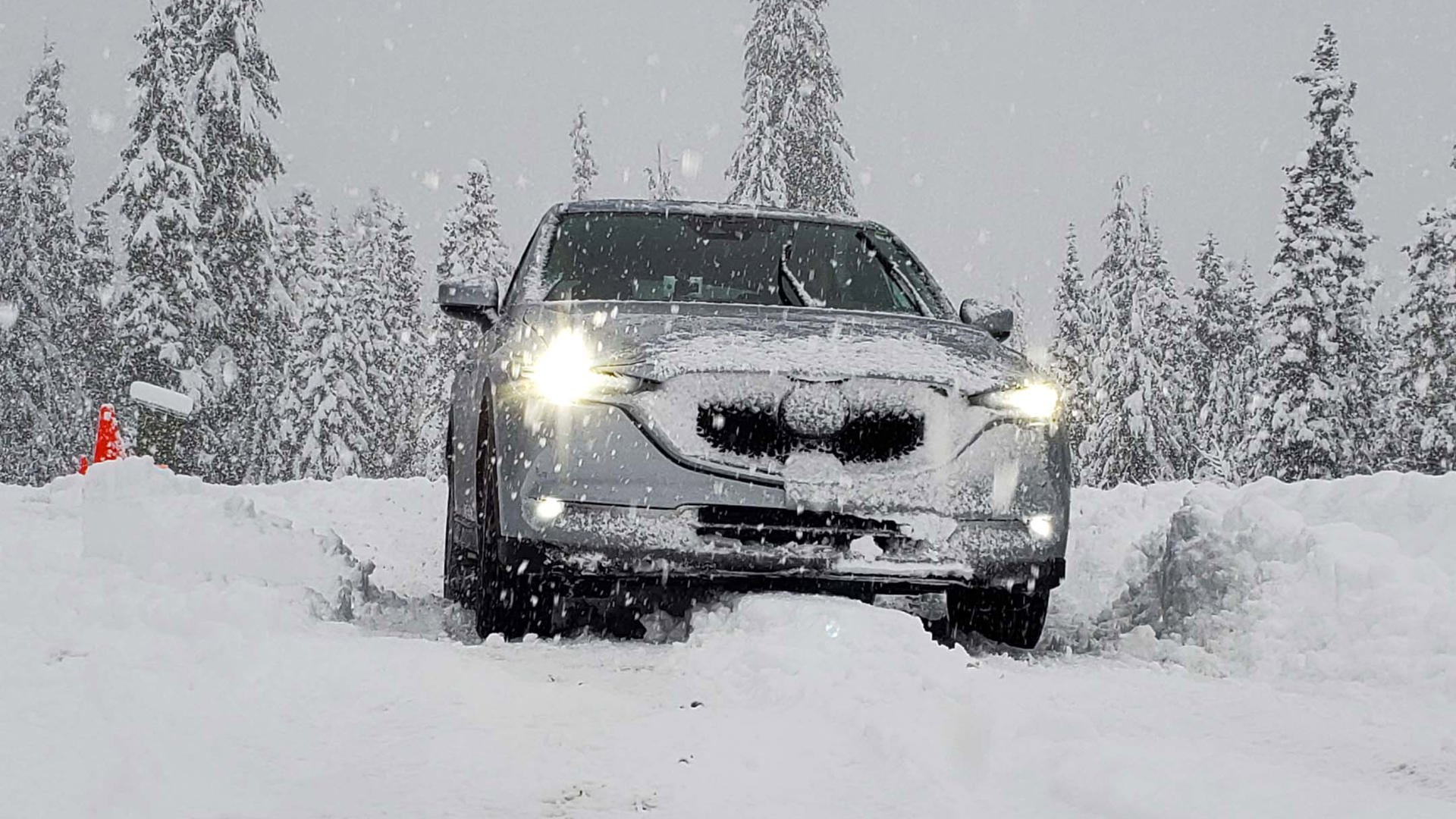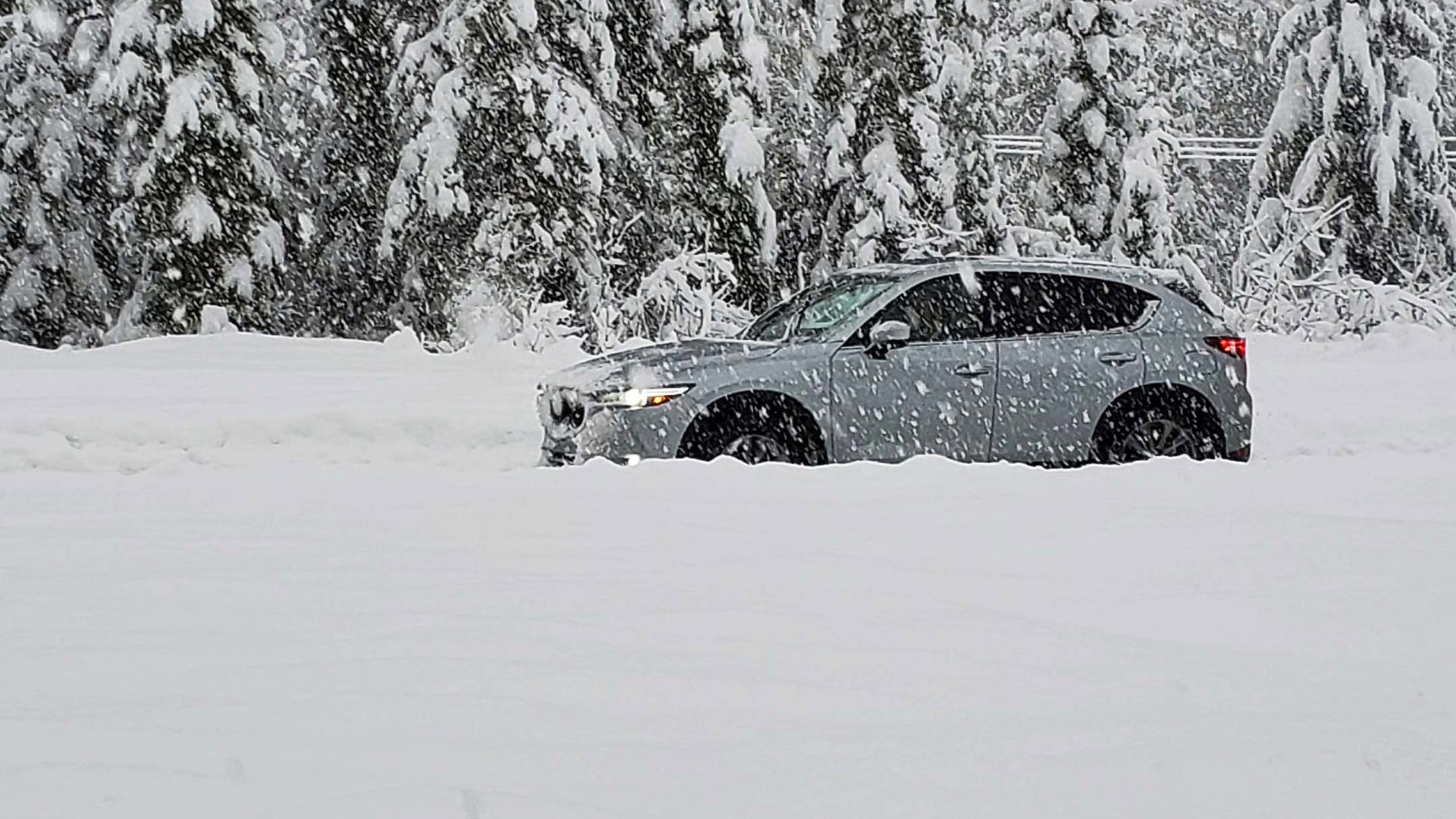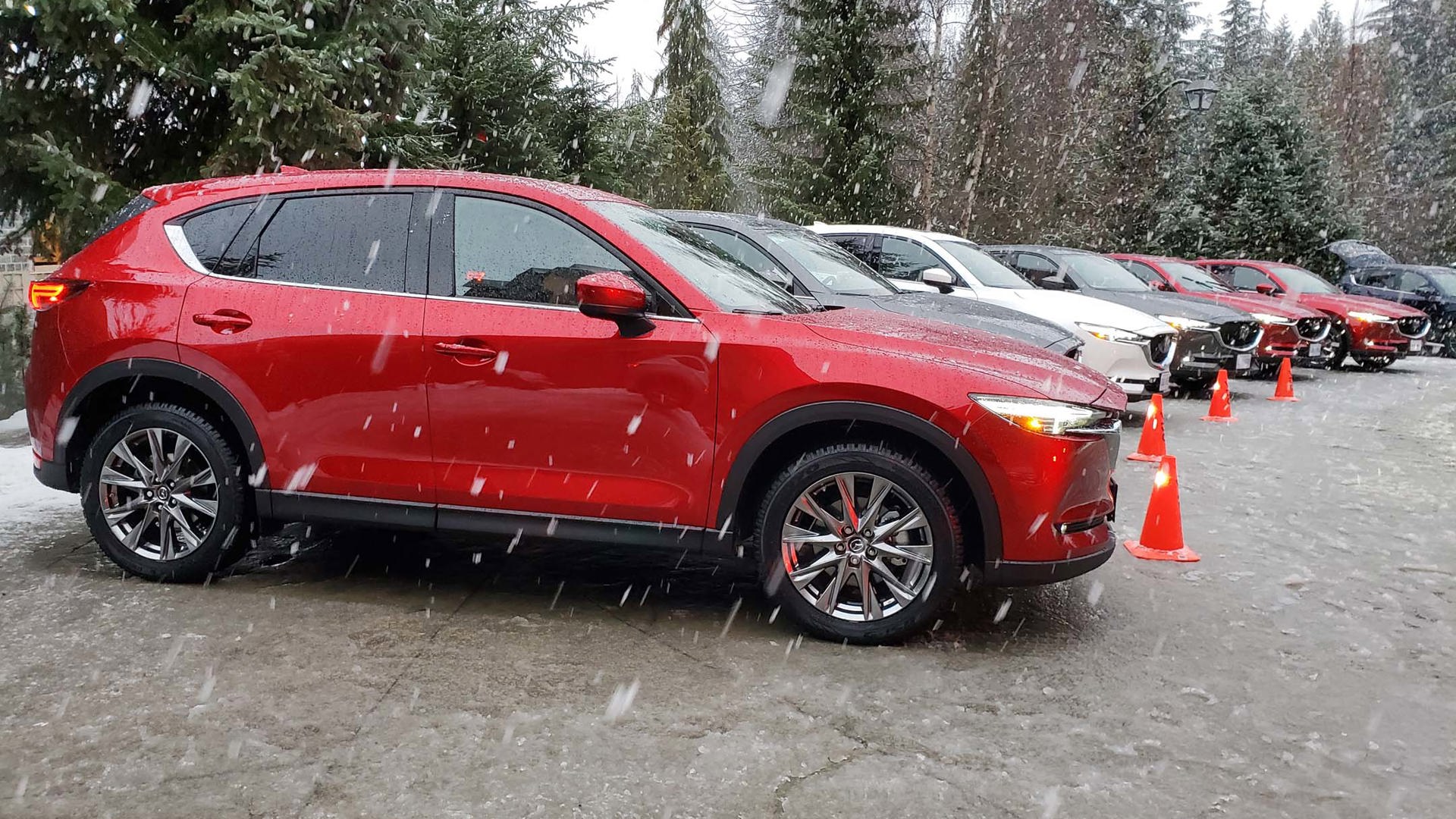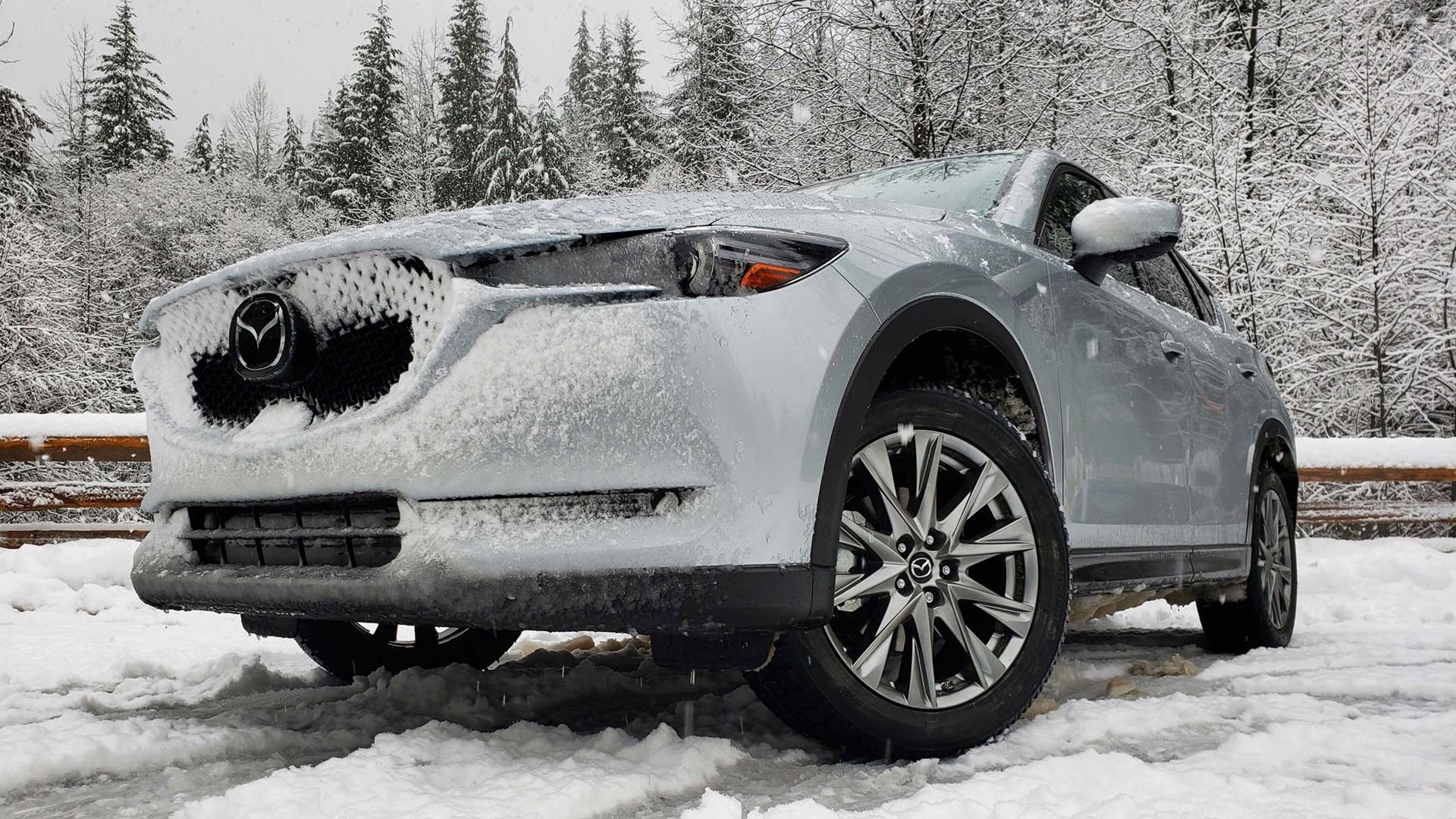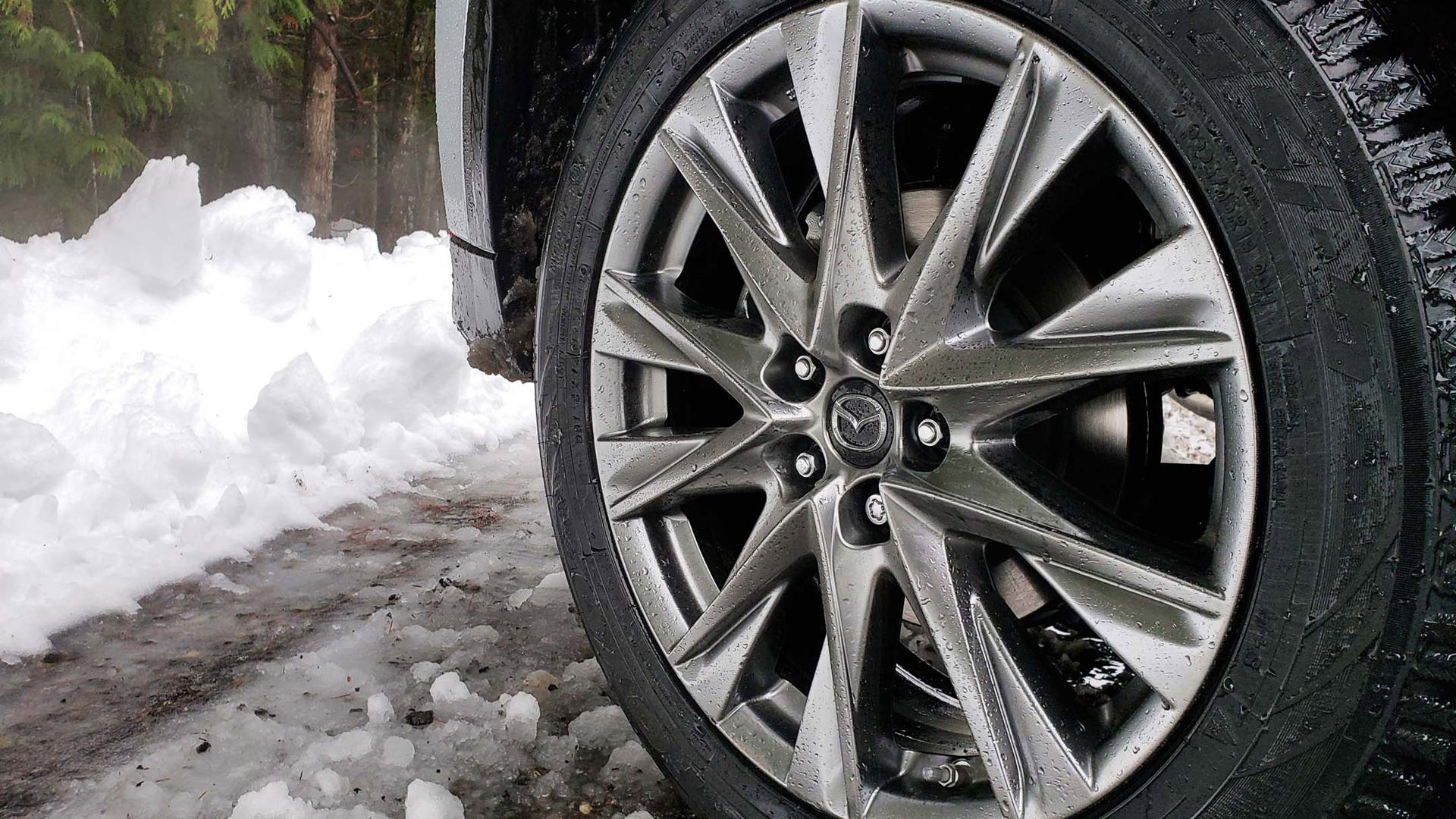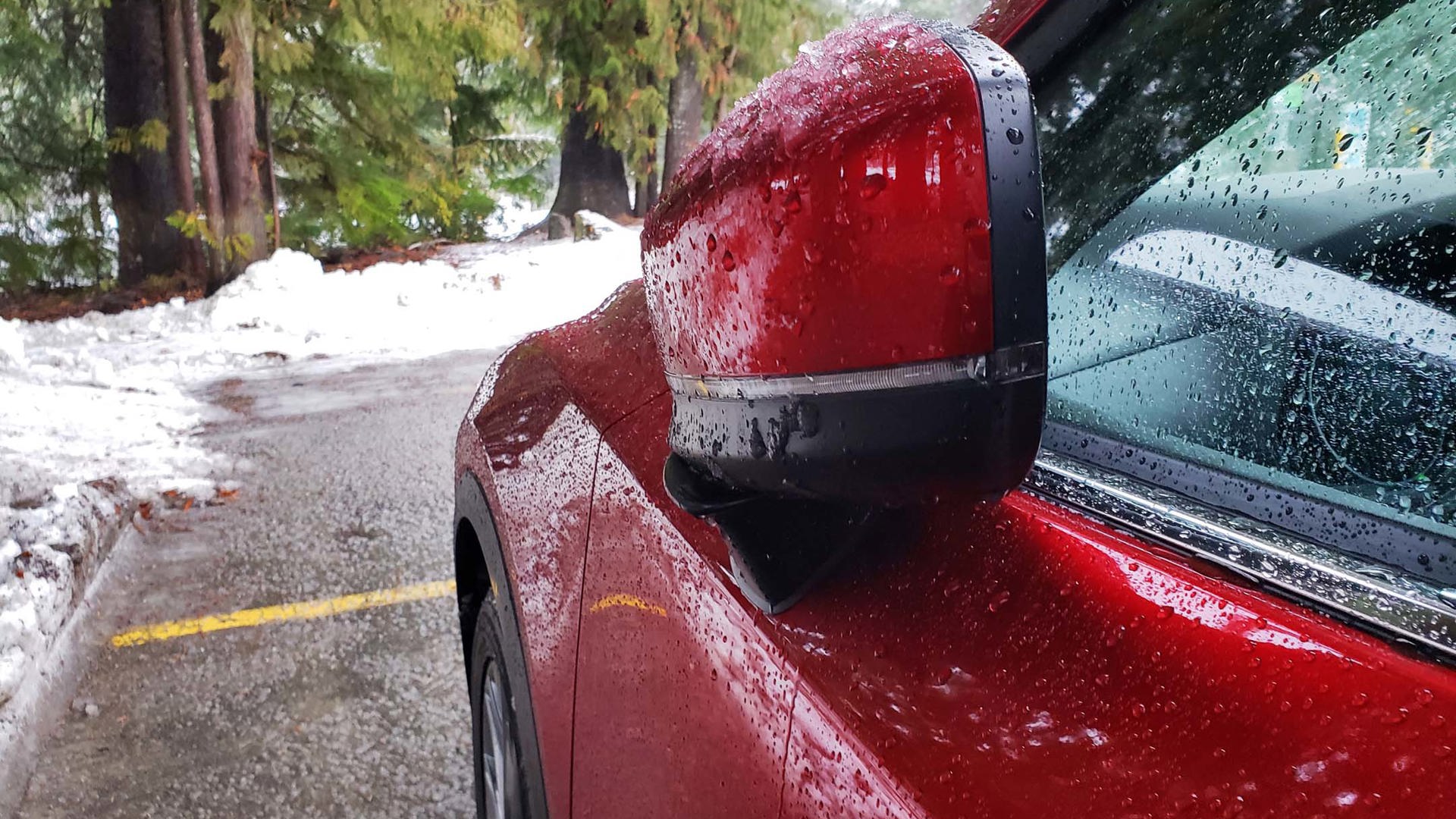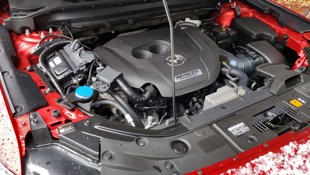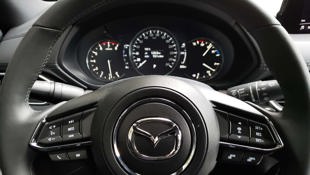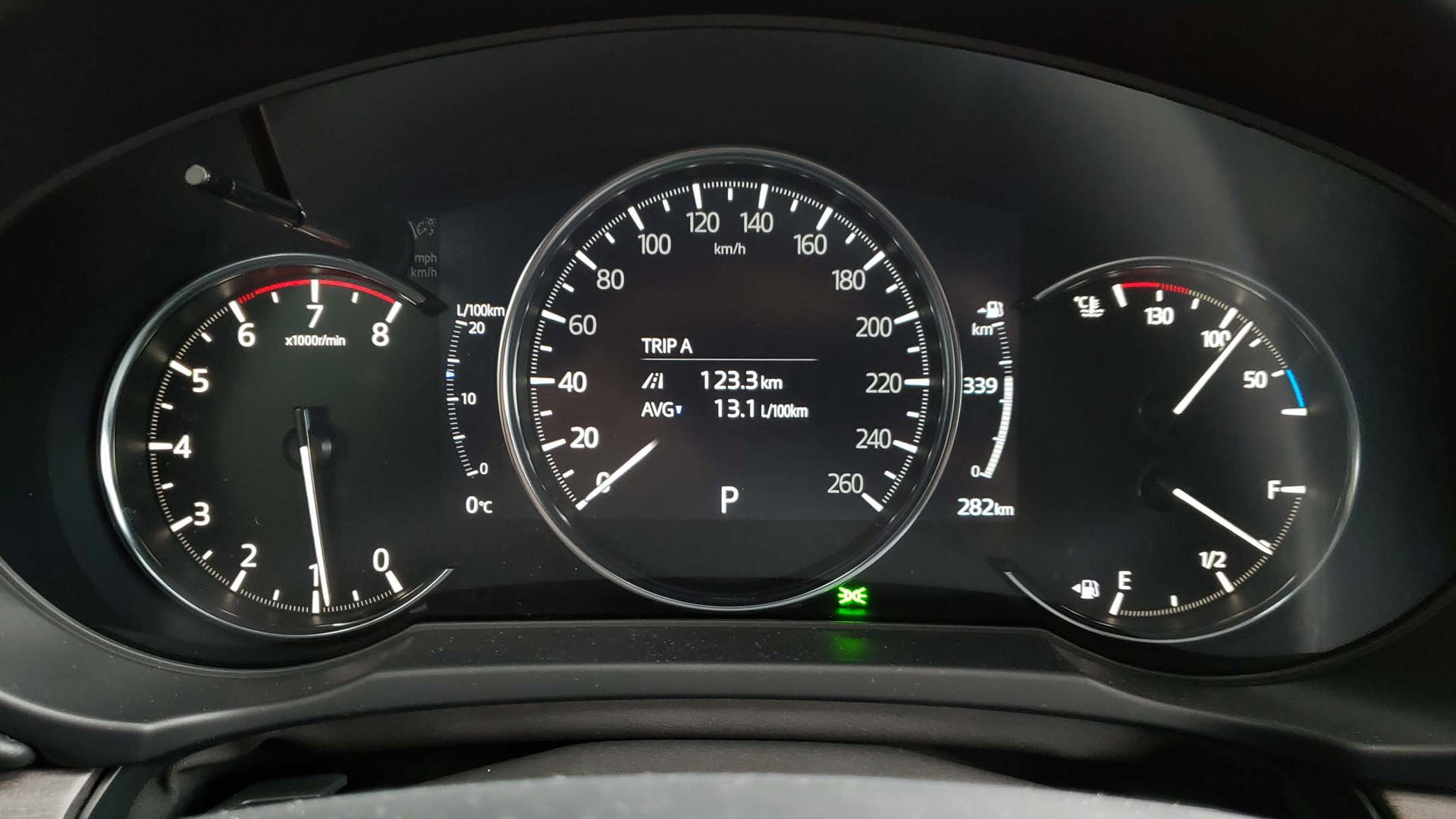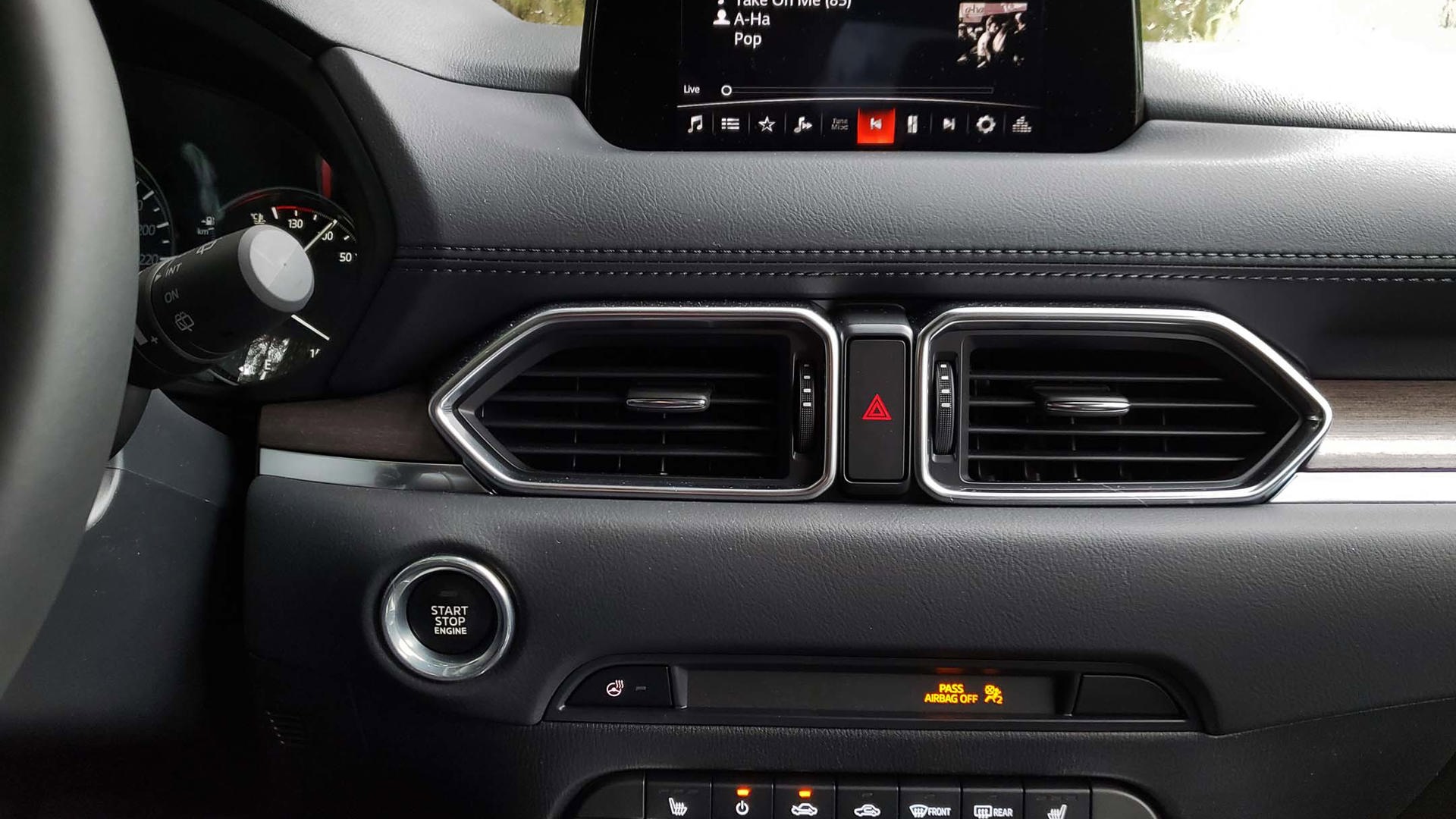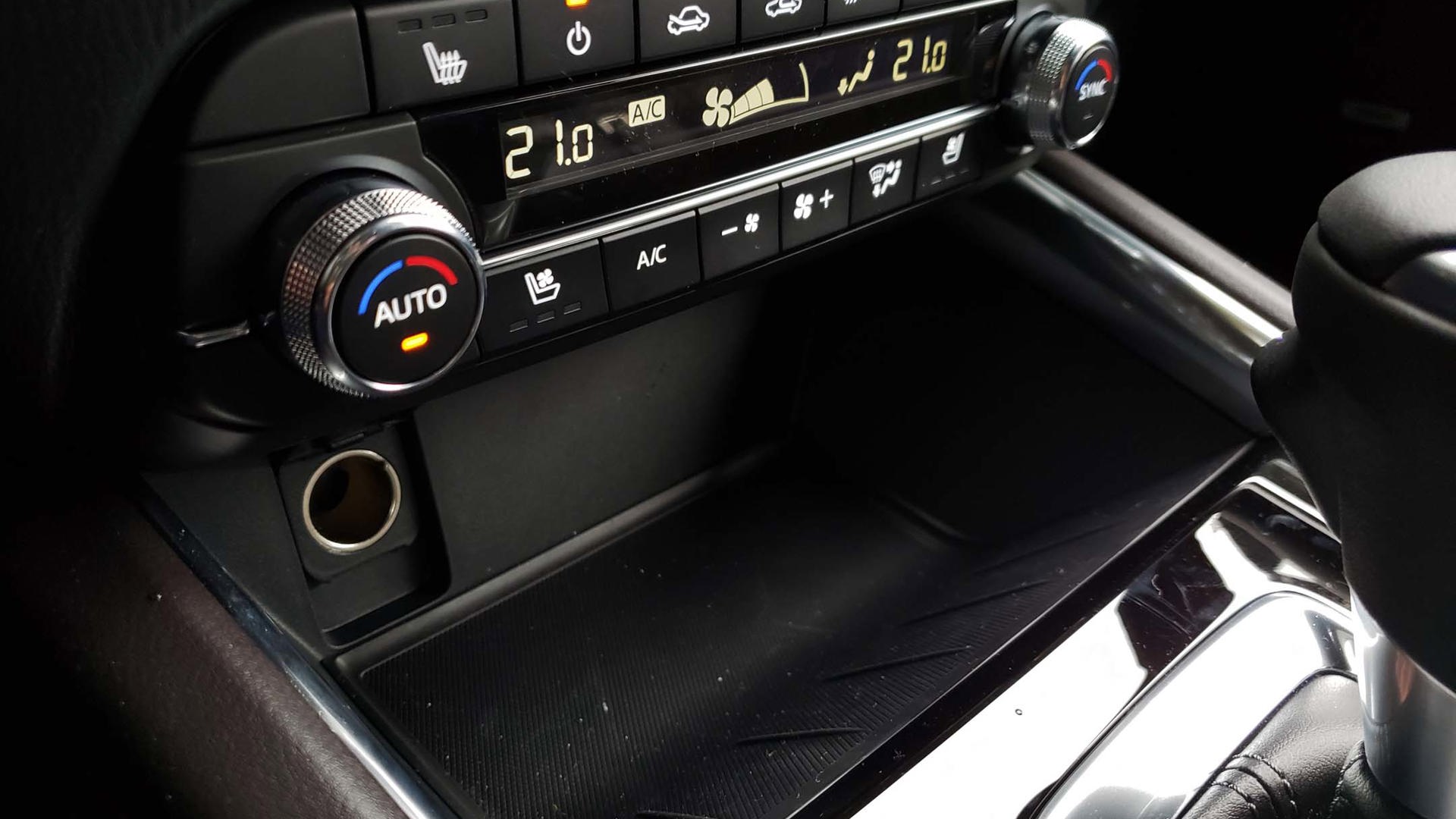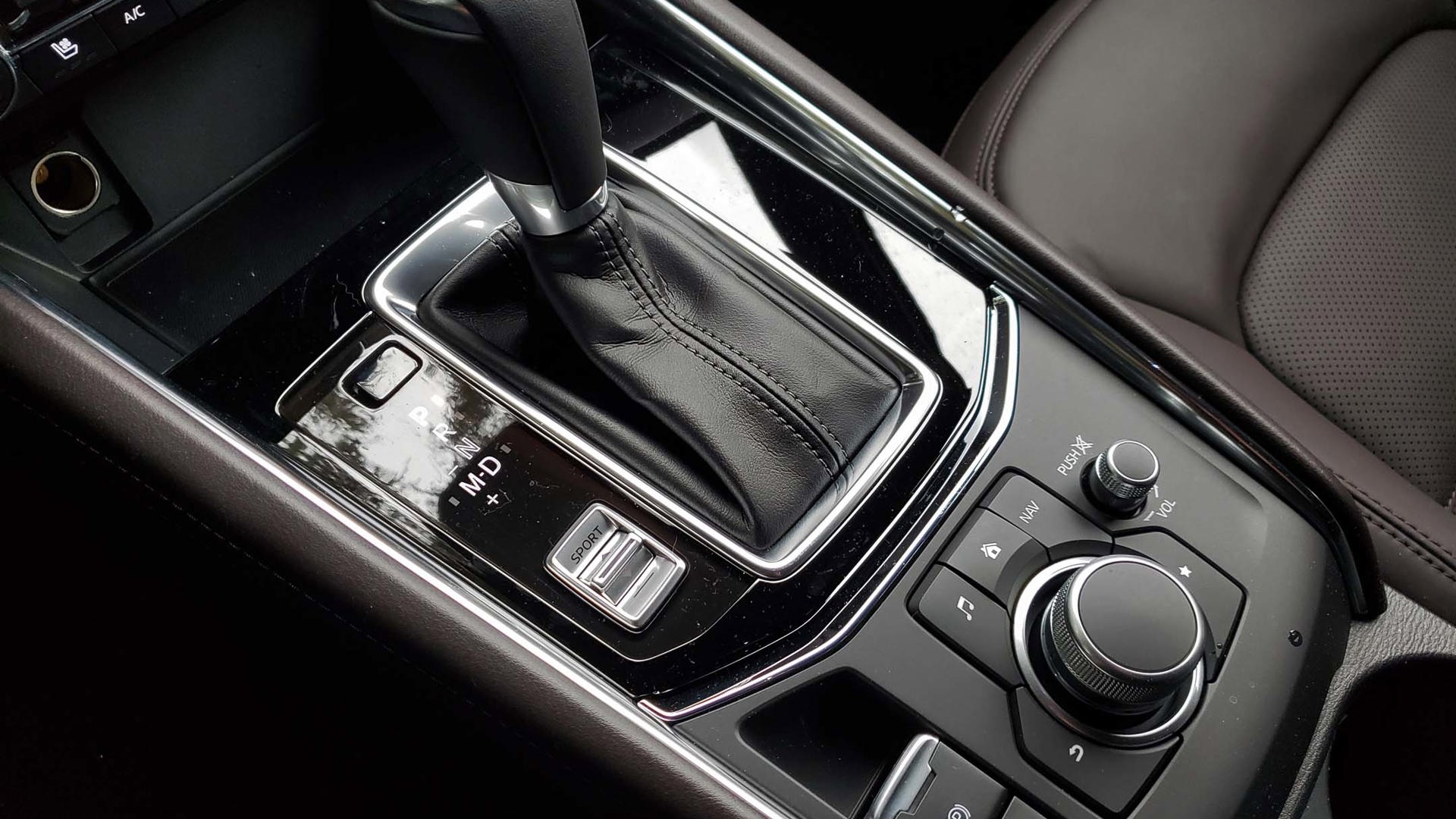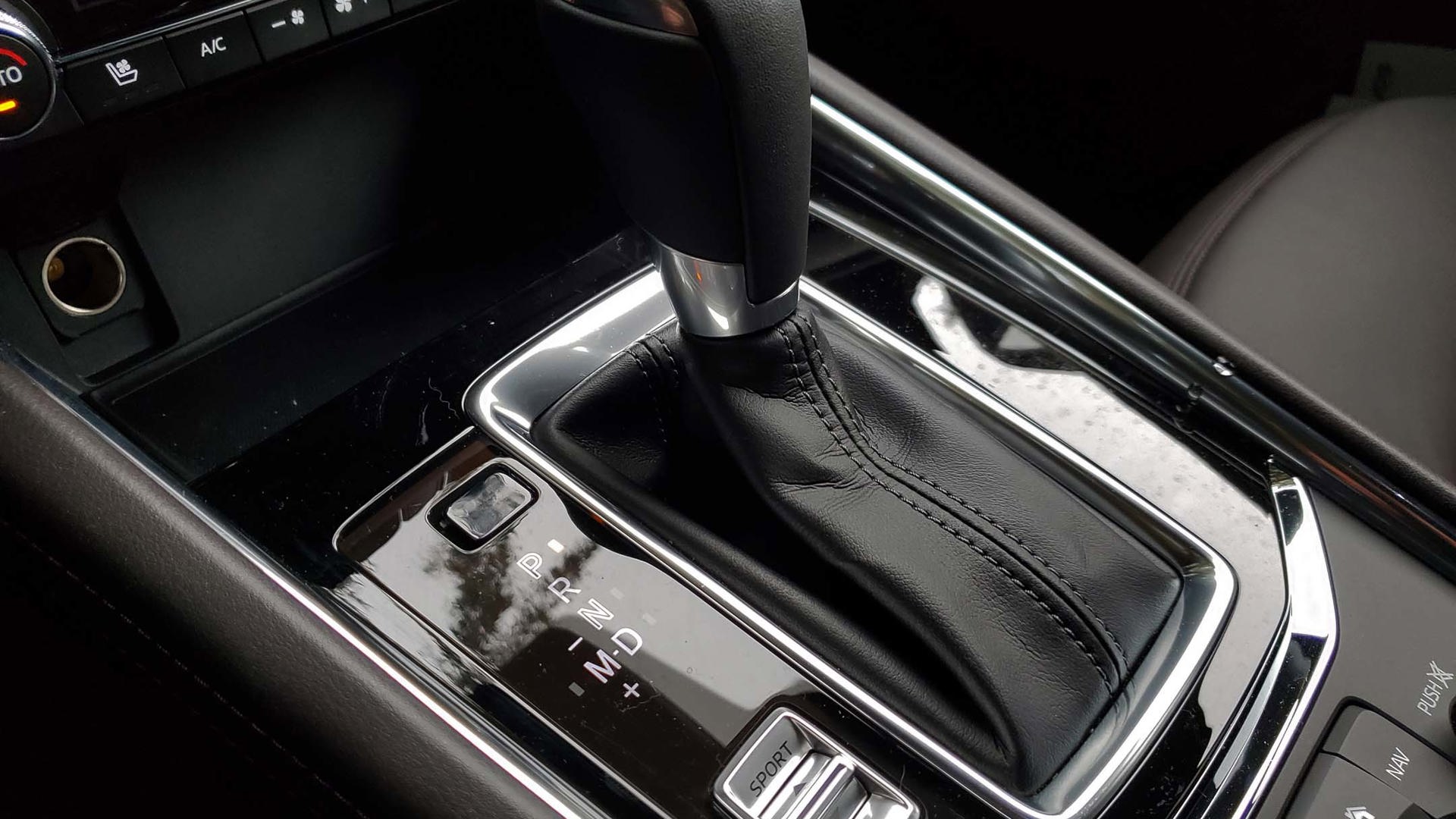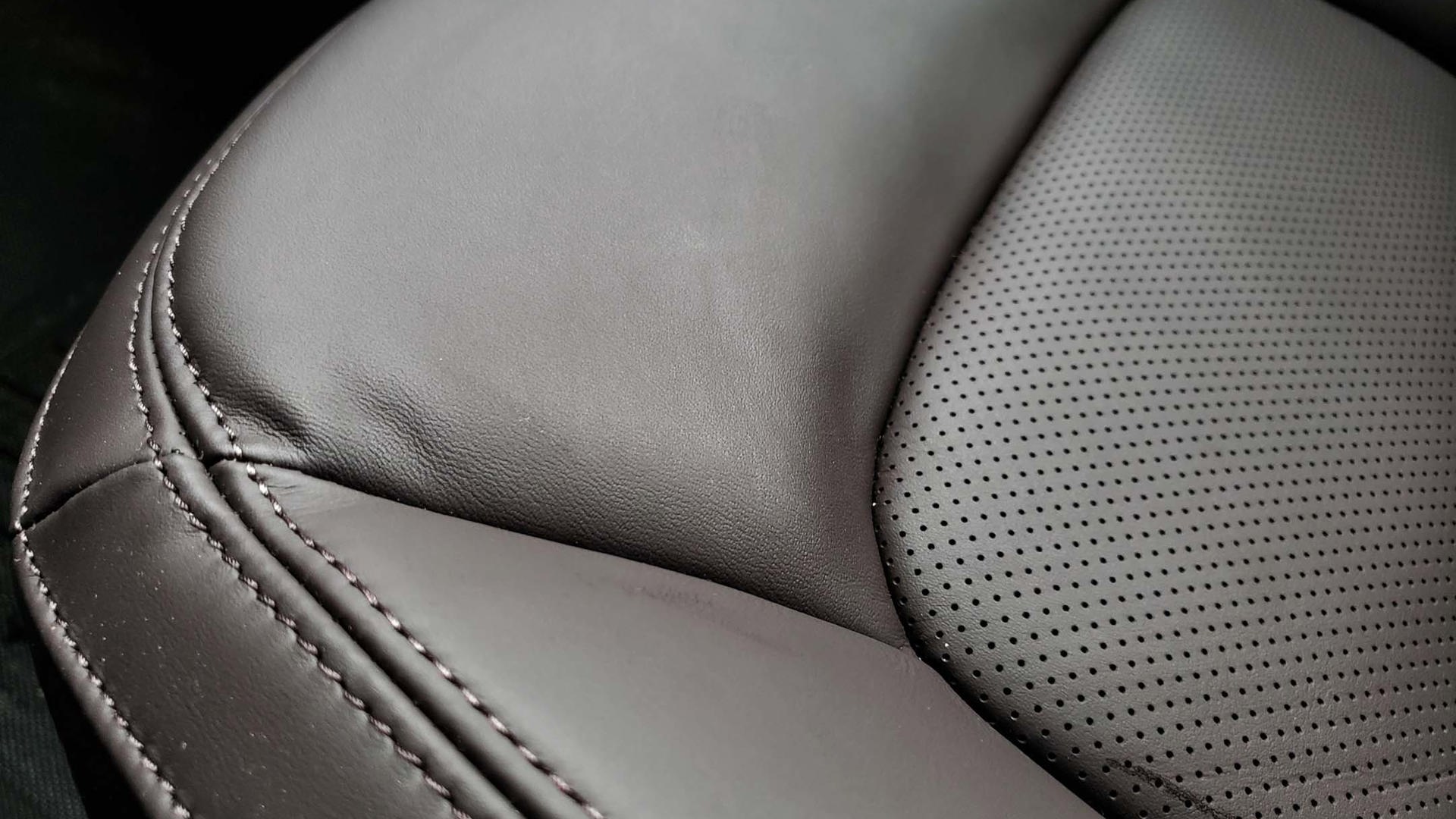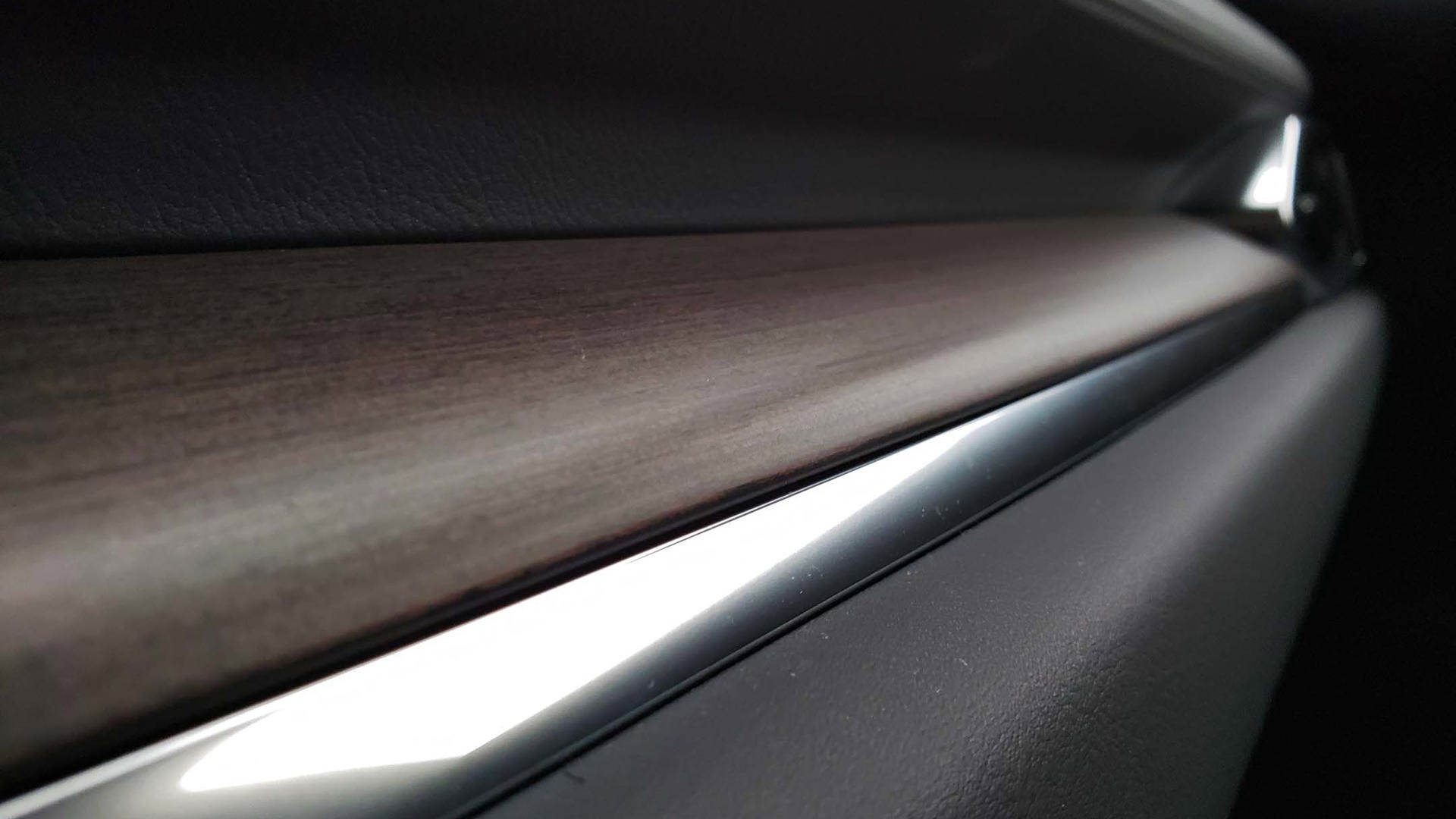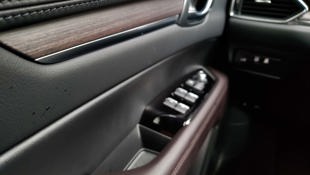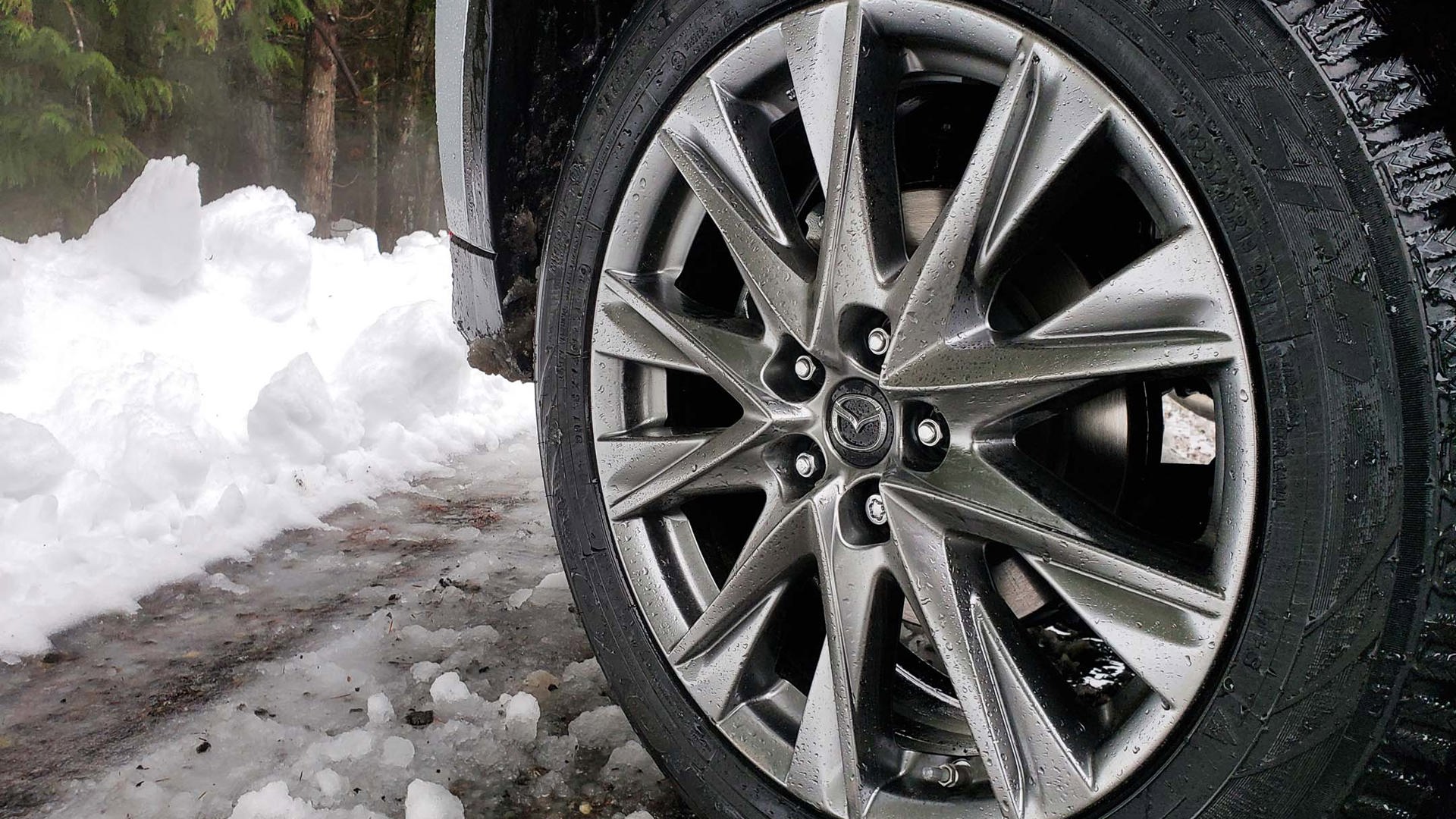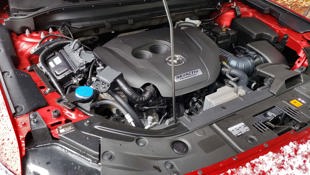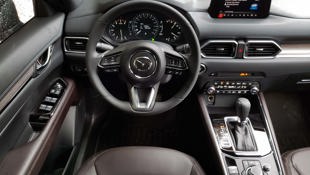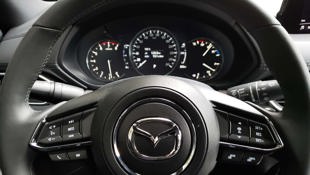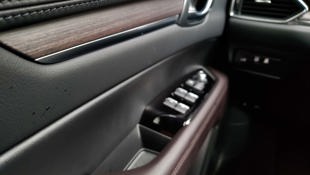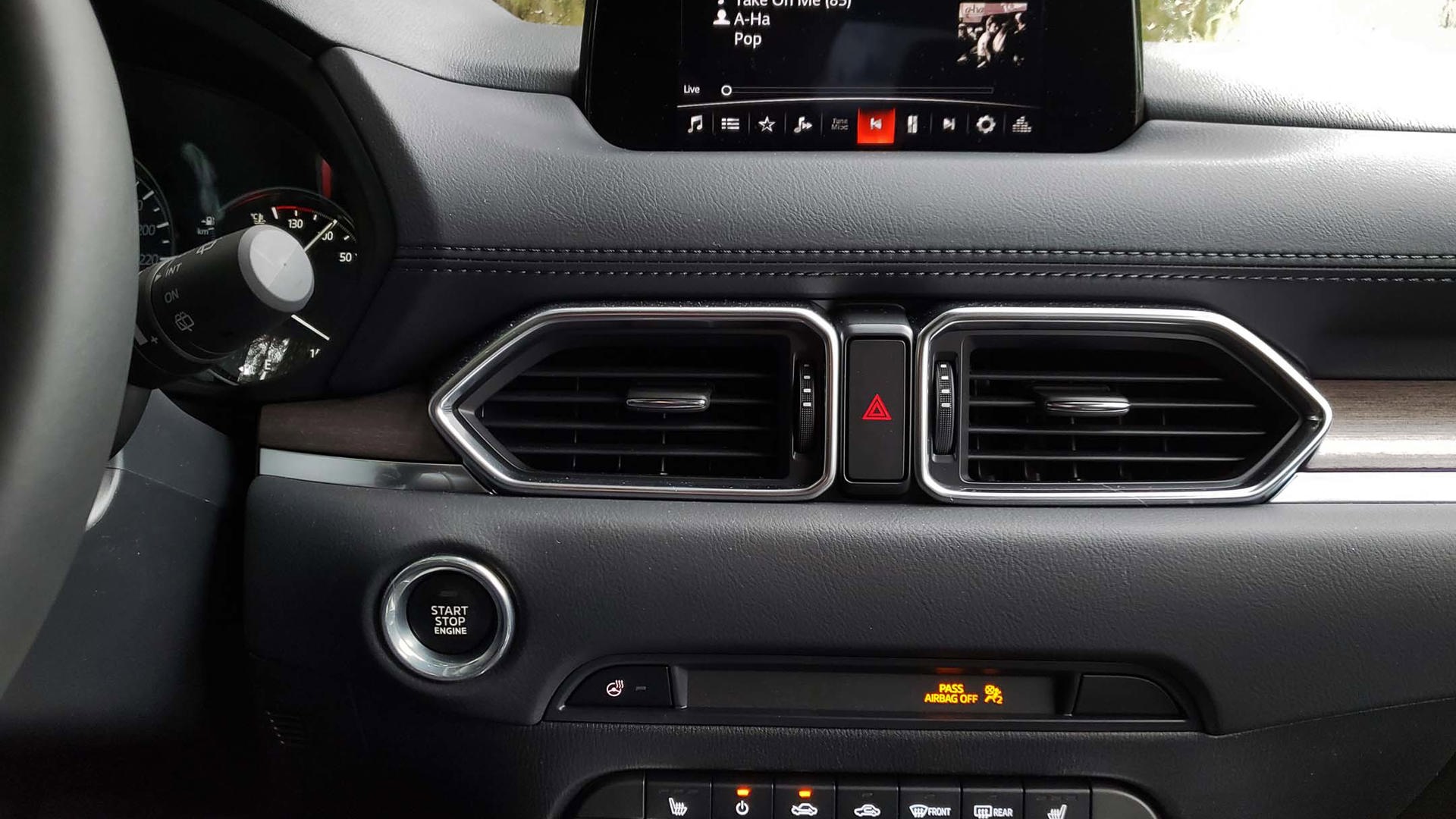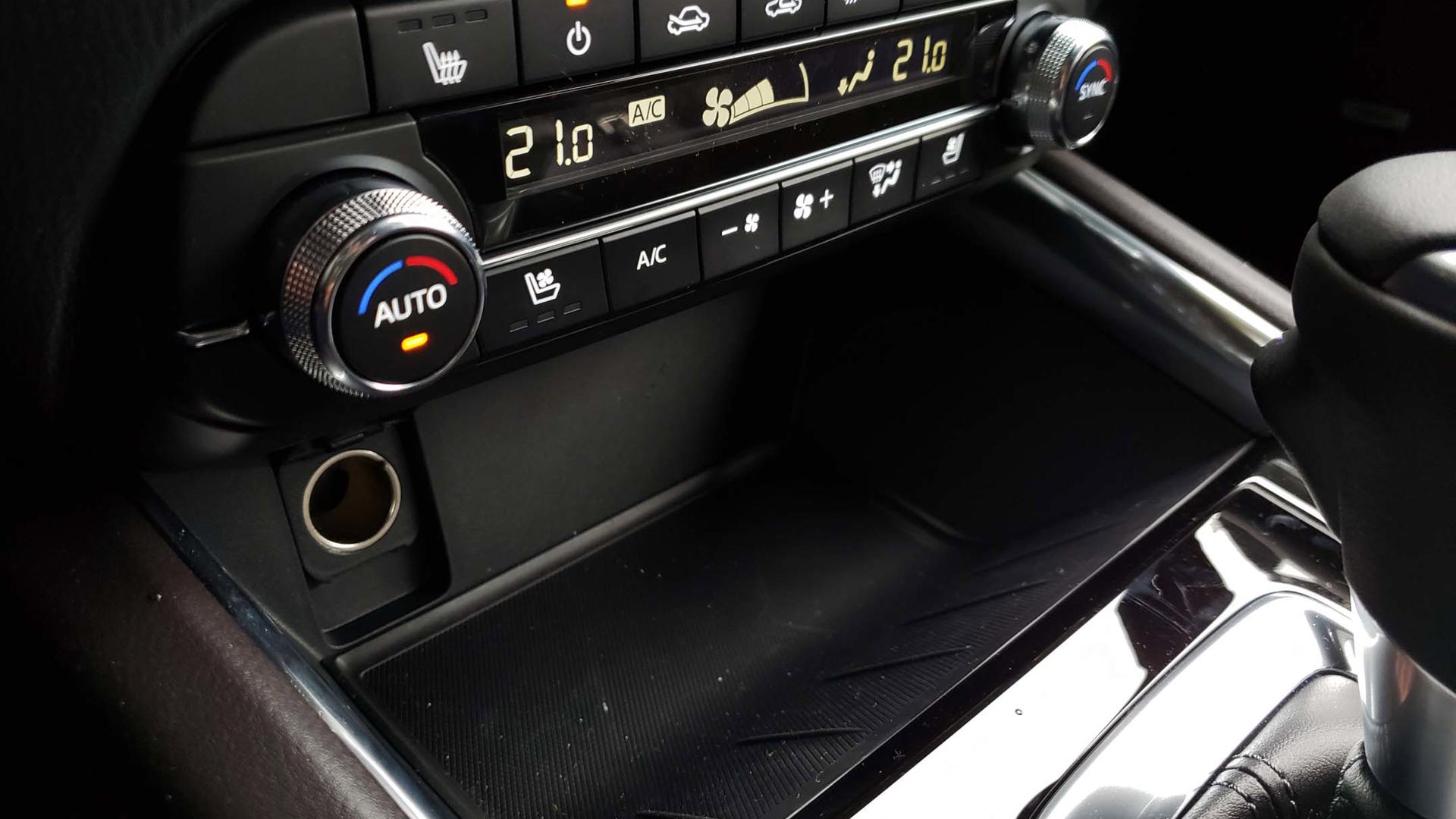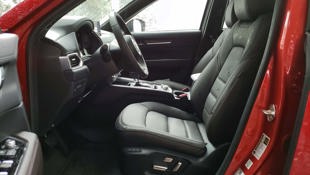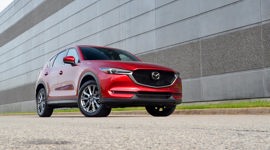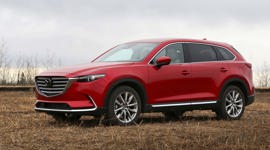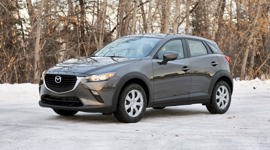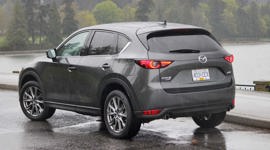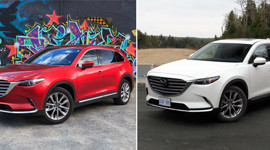It’s not a new generation – that happened just two years ago. And it’s not a mid-cycle refresh, either.
Enough to nudge people over who are still sitting on the fence.
But there’s enough that’s been updated on the 2019 CX-5 that Mazda Canada wants to make sure that people know about it.
There’s a higher-powered turbocharged engine available. Updates have been made to the suspension and G-Vectoring Control systems. Desirable features like heated front seats and Apple CarPlay and Android Auto are now standard all the way down to the base GX trim.
And there are at least a few Mazda fans who have been waiting for this: a Signature grade has landed with satin chrome finishes, wood inserts, and Nappa leather upholstery.
This was already a well-liked vehicle, particularly among those who prioritize great driving dynamics over such practicalities as rear-seat room and cargo space. These changes really ought to be enough to nudge people over who are still sitting on the fence.
New Signature grade
The Signature grade has been available on Mazda’s larger flagship vehicles, the Mazda6 and CX-9, since the launch of their most recent generations. With its introduction on the CX-5 for the 2019 model year, that attempt to chip away at the premium competition enters a more mainstream space.
Among the feature highlights: cocoa-brown Nappa leather seats, Abachi wood inserts – I had to look this up, but evidently it comes from a tree that’s native to western Africa – satin chrome accents, a leather-wrapped steering wheel with unique stitching, ambient LED lighting, a new digital instrument cluster, power-folding side mirrors, a new gunmetal 19-inch wheel design, and a frameless rearview mirror. Plus, the newly available turbocharged engine, which we’ll talk about in a moment, is standard equipment.
It all sounds very lovely on paper. But if you were hoping this would have the same level of stunning effect that it does in the CX-9, then it may be best to temper your expectations. The cocoa leather is a very deep brown, which is stunning in the right light, but in the wrong light it fades awfully close to black. And the wood inserts have a grey-brown hue that’s gorgeous on its own but doesn’t meld with the red-brown of the leather particularly well, nor does it get used in as many places in this interior as in the flagships. The latter is understandable, but I wish the designers had gone with a more ash-brown colour in the upholstery to set off the colour of the wood a little more effectively.
That said, with an all-in price of $42,945 with freight, PDI, and AC tax – which sits $3,500 above the former top-tier GT trim and only $1,500 above that same trim equipped with the new engine – the CX-5 Signature comes in as very reasonable relative to its competitors given how much it offers. Mazda Canada is estimating that the new Signature trim could end up with sales as high as 50–50 when compared against the GT, and that wouldn’t be the least bit surprising. For those who don’t fuss about brands and would rather put their money into a well-executed higher-end mainstream nameplate than a base model German badge, the CX-5 Signature is an ideal alternative.
Turbocharged engine added – and manual transmission deleted
If a desire for more power is what’s holding you back from buying a CX-5, this news might pique your interest: the 2.5-litre turbocharged four-cylinder engine that’s currently available on the Mazda6 and CX-9 is now available on the CX-5 as well.
With this engine, Mazda likes to split the horsepower figures up based on the fuel that’s in the engine at a given time. If you choose to fill it with regular fuel, it won’t hurt a thing except your peak horsepower: with 87-octane fuel it tops out at 227 hp at 5,000 rpm, while if you spring for 93-octane you’ll get 250 hp. The torque figure remains the same regardless of the fuel used, an impressive 310 lb-ft that’s fully available at 2,000 rpm and not only far and away tops out the mainstream class but betters a fair number of luxury competitors as well, including the base Audi Q5, BMW X3, and Mercedes-Benz GLC. Its fuel economy is rated at 10.8 L/100 km city and 8.7 highway, as opposed to 10.2/8.2 in the base 2.5-litre engine with all-wheel drive and 9.8/7.9 in the 2.5-litre naturally aspirated engine with cylinder deactivation.
How does the full grunt of this engine feel in the CX-5 in real life? I couldn’t tell you. We were sent out to test this vehicle on the roads surrounding Whistler, British Columbia, on a December day that started out with rain and had us wading through snow up to our knees by lunch time. (You can plan for a lot of eventualities, but weather is never one of them.) Several characteristics about the CX-5 came sharply into focus in these conditions, but the raw power of this new engine wasn’t among them. What I can say confidently is that the power delivery is very smooth, pleasant, and easy to control, and that’s in spite of the six-speed automatic transmission that also came across to this vehicle from the CX-9. It’s lightly retuned to better suit this vehicle, but it hunts around for gears on hills and in overtakes a bit much for my liking.
On the subject of transmissions, weep once more, my friends, for another one has fallen: the 2019 CX-5 drops the manual transmission entirely. Mazda Canada’s national manager of product strategy and development, Mark Peyman, told autoTRADER.ca that because Mazda sees itself as a driving-oriented brand, this is a decision that’s not taken lightly internally. But ultimately, competitors are dropping their manual transmissions as well and sales in this segment just aren’t backing up the driving enthusiasts’ desire to hold onto it. (For what it’s worth, Peyman says that cars are doing better in stick-shift sales than crossovers are, so we can expect to see them hang on for a while yet.)
Suspension and G-Vectoring Control upgrades
One of the key criticisms of the CX-5 relative to its competitors is that it tends to be a bit more tightly wound in its road manners. (In fact, we’ve penalized it for that very attribute in a comparison test.)
Mazda seeks to improve this in the 2019 CX-5 by making some suspension updates. The front geometry has been altered to reduce roll understeer, and lower-friction dampers have been added with revised top mounts for smoother wheel motion and rebound springs to control roll posture.
On top of that, there’s a new generation of the brand’s G-Vectoring Control system on the 2019s that adds a new element of control and balance to the CX-5’s steering. While the previous system already used an imperceptible amount of engine braking to transfer weight to the front tires and improve control on turn-in, this new system also lightly drags the outside front brake to give that same amount of control on turn-out. (Why not the rear outside brake? Because the controller would be too far away, and the process of activating the brake would therefore take longer than the 30 to 40 milliseconds that the car has to act before you notice that it’s doing something. They really think these things through.)
How does it do? We were afforded the use of a snow-covered handling course to put these upgrades to the test. In higher-load and emergency-type manoeuvres, these changes make a noticeable difference. The degree to which the car remains level and gathers itself back up is remarkable. But I wouldn’t say that the suspension updates equate to much of a difference in how the CX-5 handles on rougher paved roads, and that’s the scenario that Canadians find themselves dealing with more often.
Heated seats and smartphone integration from base
If your vehicle shopping budget is closer to $30,000, the CX-5’s base GX trim is suddenly worth a look as it now includes heated front seats and Apple CarPlay and Android Auto integration as standard equipment. Our American friends don’t get these features at entry level, so these can be viewed as Canadian exclusives. The all-in price on a GX is now $29,845 with front-wheel drive, which is $650 more than the price for last year’s GX FWD with an automatic.
Verdict
From top to bottom, Mazda has packed a lot of value and appeal into the 2019 CX-5 and made a car that was already a good fit for Canadians even better. There’s still room for improvement, of course, but those who are happy to take a premium-feel vehicle without the premium price tag should give the 2019 CX-5, and the Signature trim in particular, some serious consideration.
2019 Mazda CX-5 Trims and Pricing
All prices include freight, PDI, and AC tax.
GX ($29,845 FWD; $31,845 AWD; $32,745 AWD with i-Activsense)
On top of the 2018 GX features, this base grade comes with Apple CarPlay and Android Auto functionality for the first time as well as adjustable heated front seats, a new finish for the entry-level 17-inch alloy wheels, and the suspension updates and G-Vectoring Control upgrades that apply to all 2019 models.
GS ($32,745 FWD; $34,745 AWD)
This trim now incorporates all of the safety technologies from the i-Activsense package as standard equipment, including adaptive cruise control, forward pre-collision warning and emergency braking, lane keep assist and lane departure warning, and high beam assist. The comfort package ($1,500) adds a power glass moonroof, keyless entry, rear passenger vents, and automatic dual-zone climate controls.
GT ($39,445 AWD)
At this level, SiriusXM Traffic Plus and Travel Link services are included and are free for five years, plus ventilated front seats and power folding exterior mirrors are added, along with new 19-inch alloy wheels. An upgrade to the turbocharged engine costs $2,000 more.
Signature ($42,945 AWD)
The turbocharged engine is standard on this new top grade, which also adds the Nappa leather and satin chrome accents with wood inserts plus a leather-wrapped steering wheel with unique stitching, ambient LED lighting, unique gunmetal 19-inch alloy wheels (which are beautiful, by the way), a black headliner, and a frameless rear-view mirror.

